Six
OCCUPATIONS AND DIVERSIONS
In the first decades of Pontiac, typical occupations for men included lawyer, doctor, surveyor, merchant, architect, banker, tailor, elected positions, farmer, carpenter, miller, blacksmith, brick maker, plasterer, teamster, logger, and shoemaker. For women, typical jobs included homemaker, teacher, nursemaid, cook, housekeeper, gardener, caregiver, seamstress, civic leaders, and landlady. Women were also recognized in many fields like medicine and higher education. By the 1920s, African American doctors and lawyers were opening offices in town.
After the Civil War, Main Street shops sold candy, bicycles, and men’s, women’s, and children’s garments. There were music stores, theaters, restaurants, and hotels, with stables and blacksmiths intermingled. Pharmacies were coming onto the scene. General stores offered a little of everything, including dry goods like sugar, flour, coffee, and beans. There were hardware and sporting goods stores. Builders and land agents had offices around town. Basically everything that was essential was conveniently located to those that lived in town. For example, the train station was close by, and the courthouse was on the corner. By the time automobiles were being sold, dealerships for the various brands sprang up in downtown.
Early on, police and fire departments provided protection for Pontiac. However, most early buildings were extremely vulnerable to fire, which made it challenging to keep a fire from spreading. By the mid-20th century, African Americans and Hispanics were in both the police and fire departments, even though they were few.
Picnics were an affordable diversion for everyone. Music and dance lessons were common. Boys could fish and hunt. By the beginning of the 20th century, a library had opened. Boy Scout and Girl Scout groups began forming. The Pontiac Creative Art Center opened in 1968. By this time, there were all kinds of sports teams for kids and adults to be active in. Pontiac started a network of community and senior centers. Due to difficult financial times, most of these centers have been closed with no hope of them reopening.
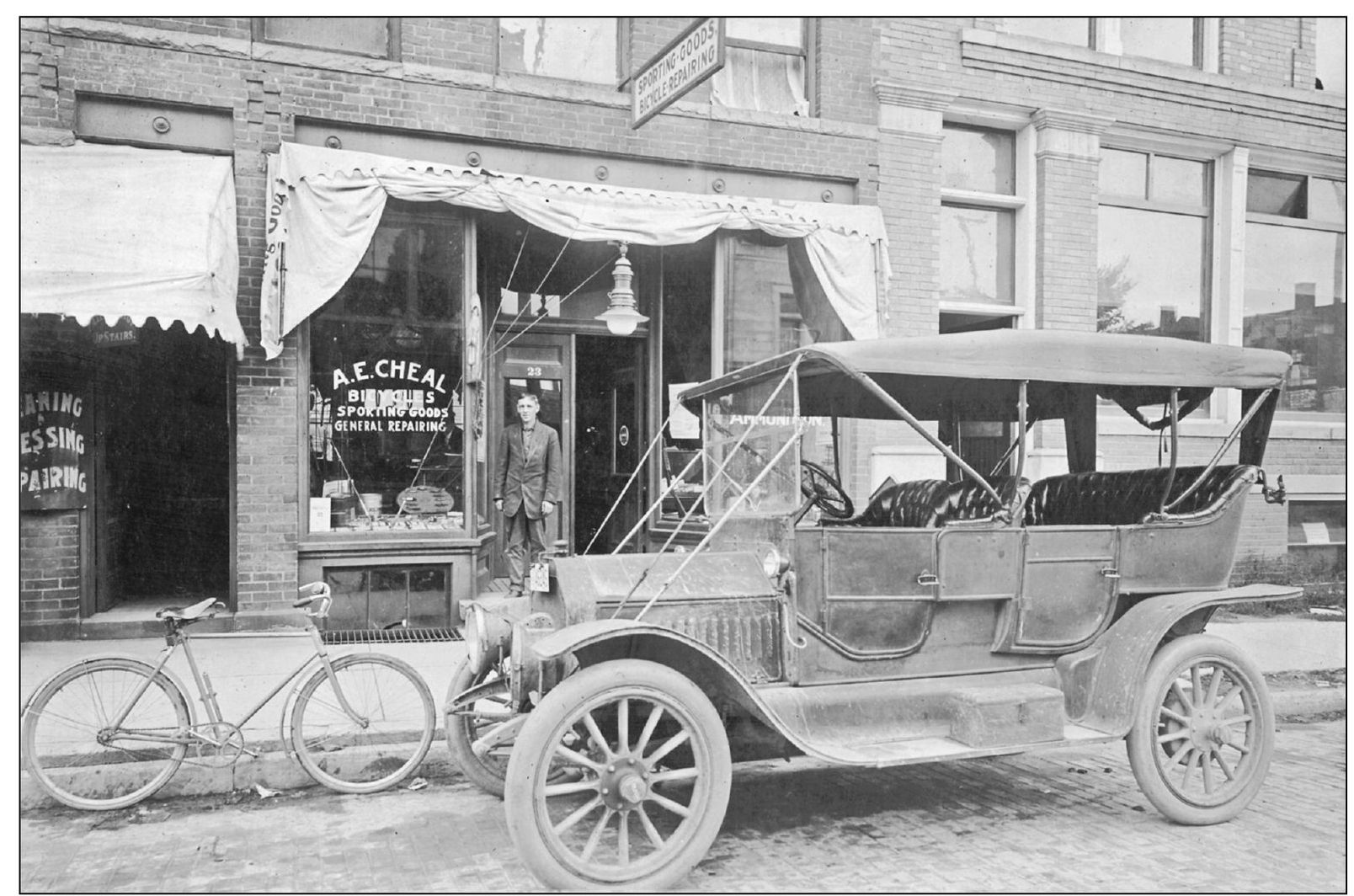
BIKE STORE. A. E. Cheal had a bike and sporting goods store on Saginaw Street. The owner has on his suit coat. The bike is positioned in front of an auto of the day to illustrate some comparison. Brick pavers are working on the street. By the early 1920s, Pontiac had more paved streets than any area in the county, which made it a good place to ride and sell bicycles. (Courtesy of OCPHS.)
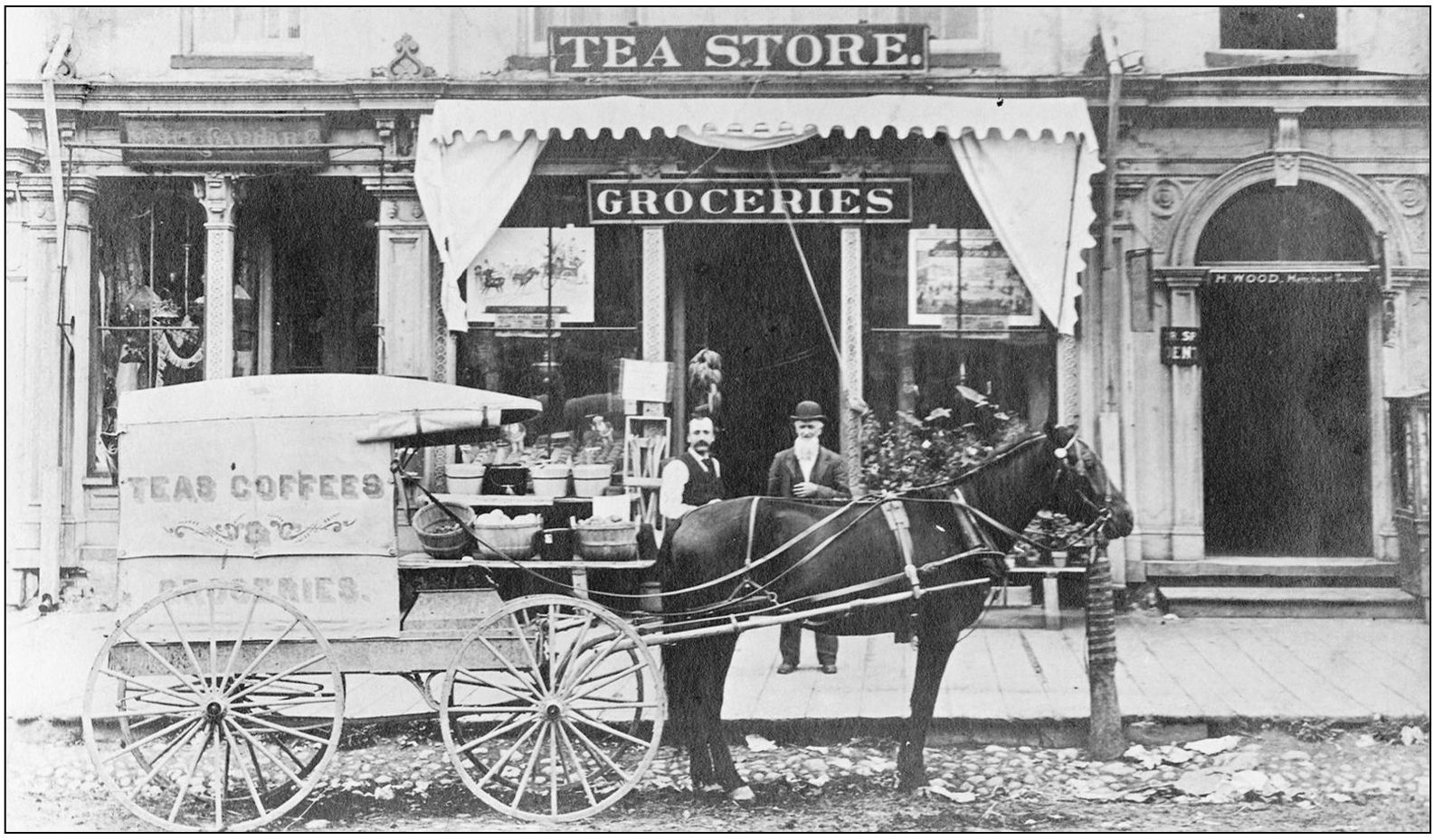
TEA STORE. For someone to put it on the front of his store, it is apparent that tea was a big seller. Catering wagons are not a modern invention or convenience. They have been in business for a long period of time. The sidewalks are wooden, and the street is unpaved. A hitching post stands where one might find a parking meter today. (Courtesy OCPHS.)
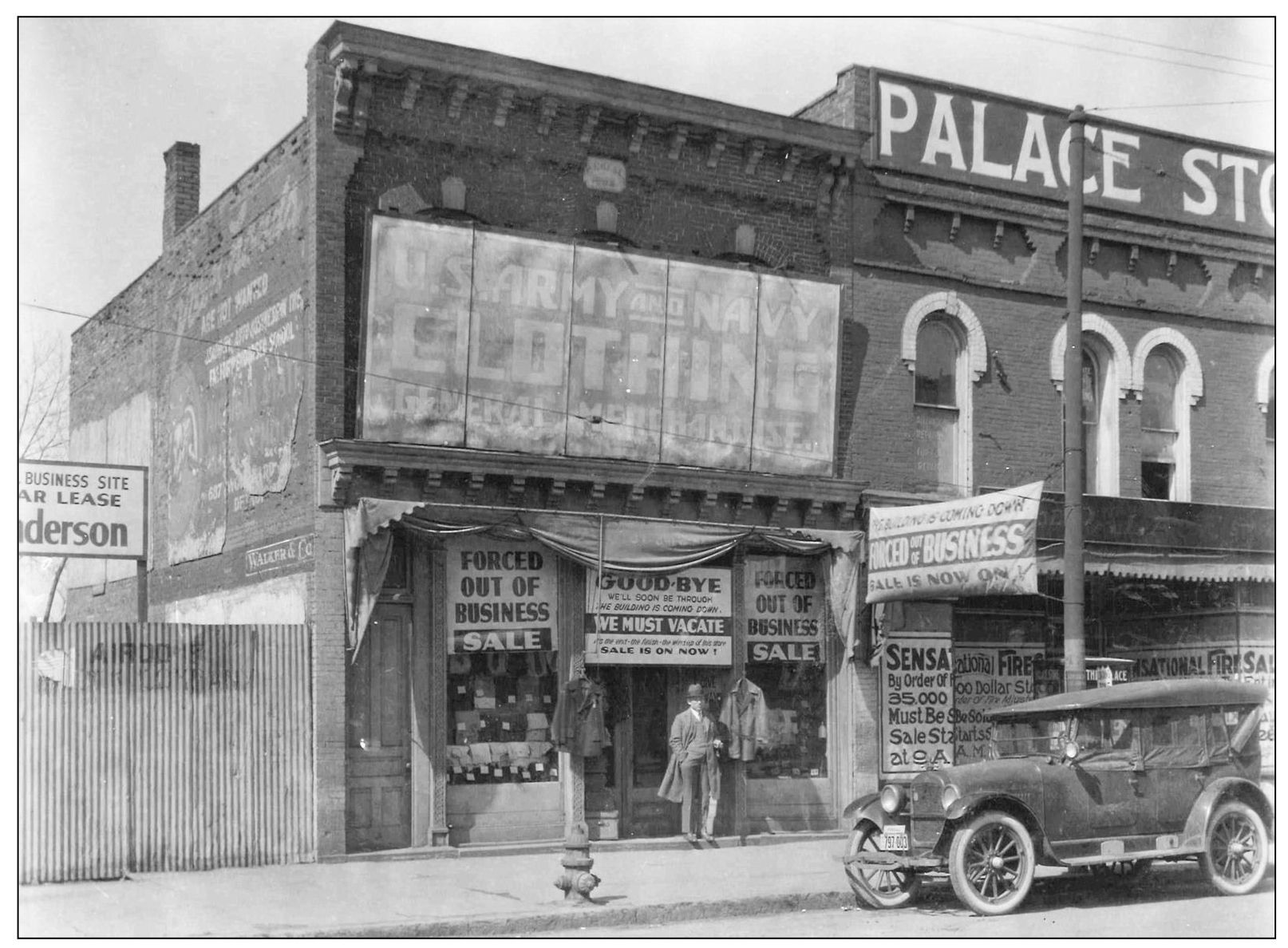
ARMY-NAVY SURPLUS. The sign in the window states that the building is coming down, forced out of business. It appears the building to the left is already closed. Joe’s Army Navy was also a fixture on Saginaw Street in the 1950s and 1960s. (Courtesy of OCPHS.)
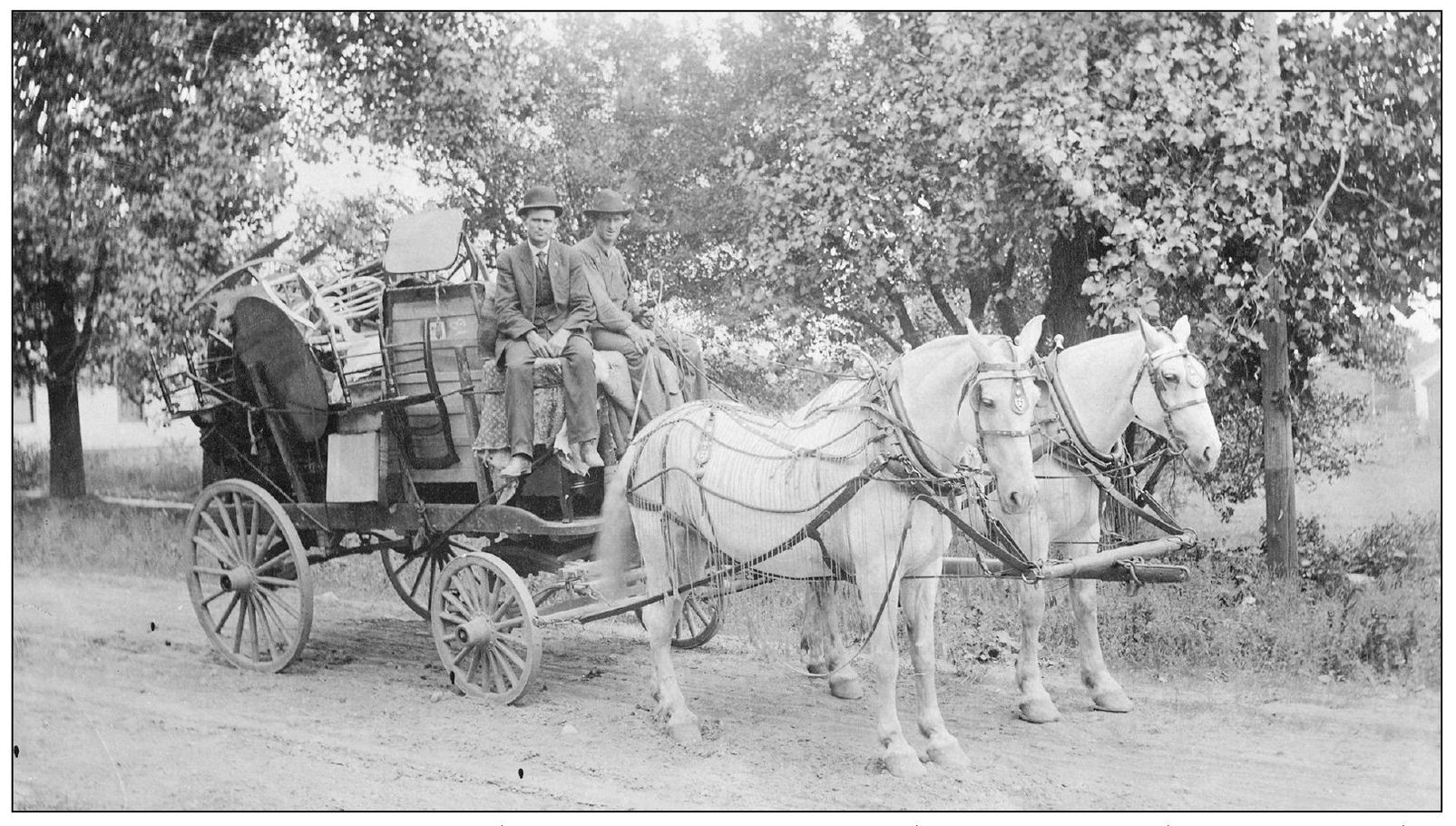
AUSTIN AND MASON MOVERS. This moving company offered a variety of trucking services. This crew is using a chest of drawers as their wagon seat. The furniture in the back is heaped on, with no care for packing or padding, but the horses are adorned with a fringe of some kind, and their tack is of a fine variety. The drivers are even in suits and ties. (Courtesy of OCPHS.)
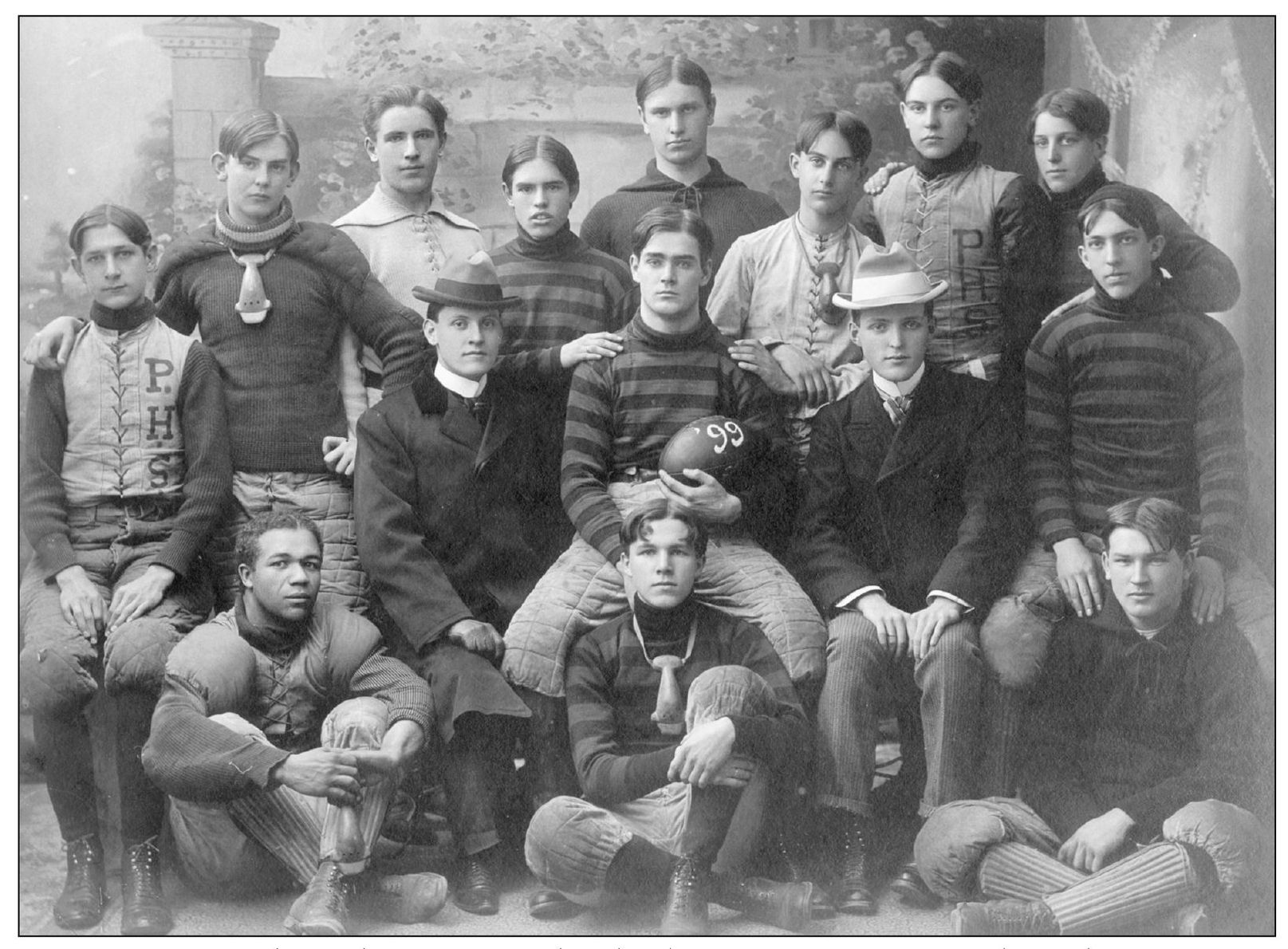
FOOTBALL TEAM. This is the Pontiac High School team of 1899. It is touted as a champion team despite a slow start and a ragged look. The team went on to win the state title, defeating Plainwell in the final game. Their uniforms lacked standardization. Some players had padded shoulders, and some had mouth guards. At this time, helmets were not used in the sport of football. Wilbur Hughes (front row, left) was the first African American to graduate from Pontiac High School. (Courtesy of OCPHS.)
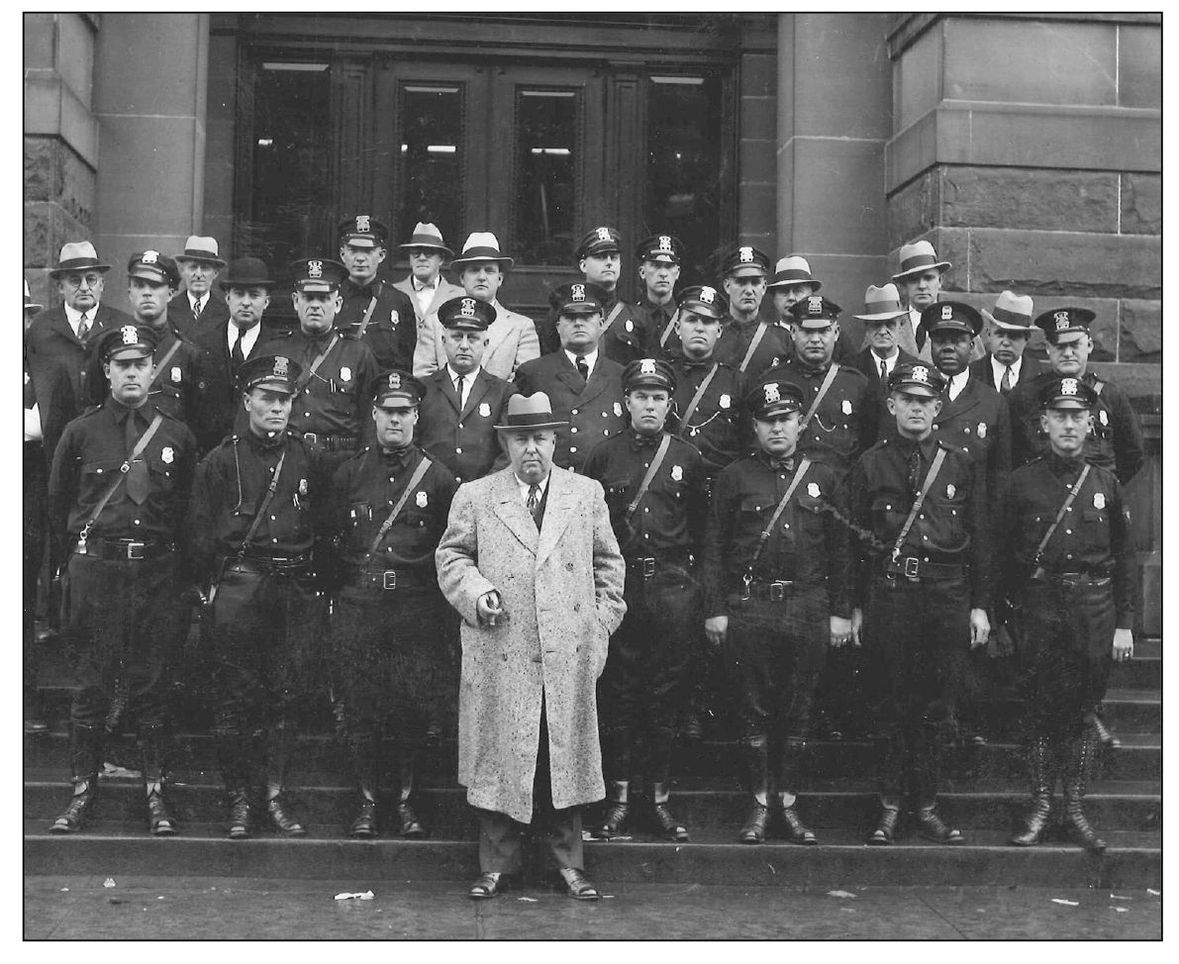
PONTIAC’S FINEST. This photograph shows the Pontiac Police Department in the 1930s. Allen Noble, Pontiac’s first African American police officer, is pictured. He graduated from the University of Michigan in 1931. It wasn’t until 1952 that Pontiac hired its first Hispanic officer, Rudy Martinez. Martinez went on to retire from the force after a long career. (Courtesy of Pontiac Public Library.)
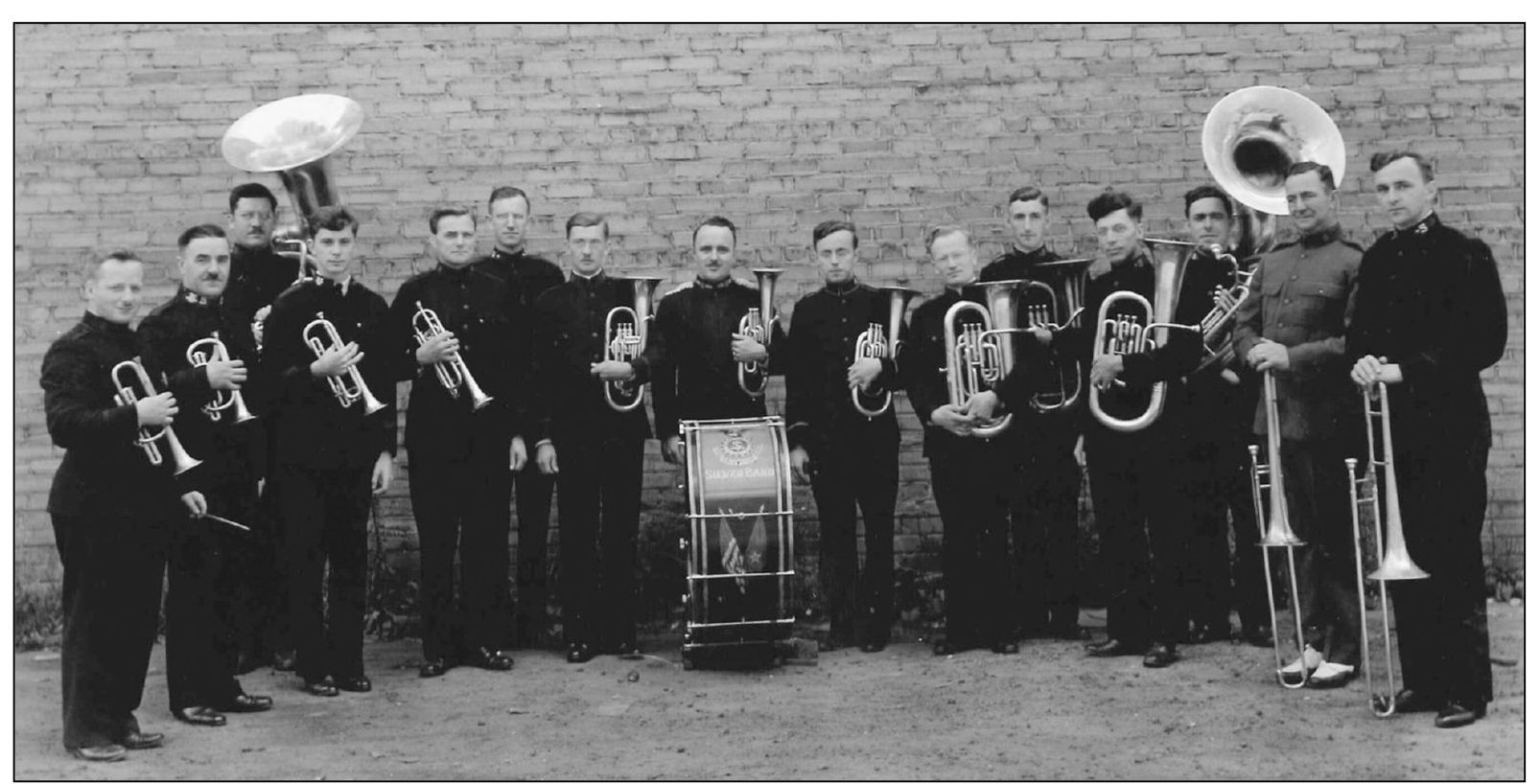
SALVATION ARMY BAND. It has been 120 years since the corps came to Pontiac. The Salvationists are known for taking a message of salvation and redemption to the downtrodden. In Pontiac, its rehabilitation center and retail store are closed today. The photograph on page 76 shows the center before the army occupied it. Built in 1921, its first building still exists at 29 West Lawrence Street. (Courtesy of the Salvation Army.)
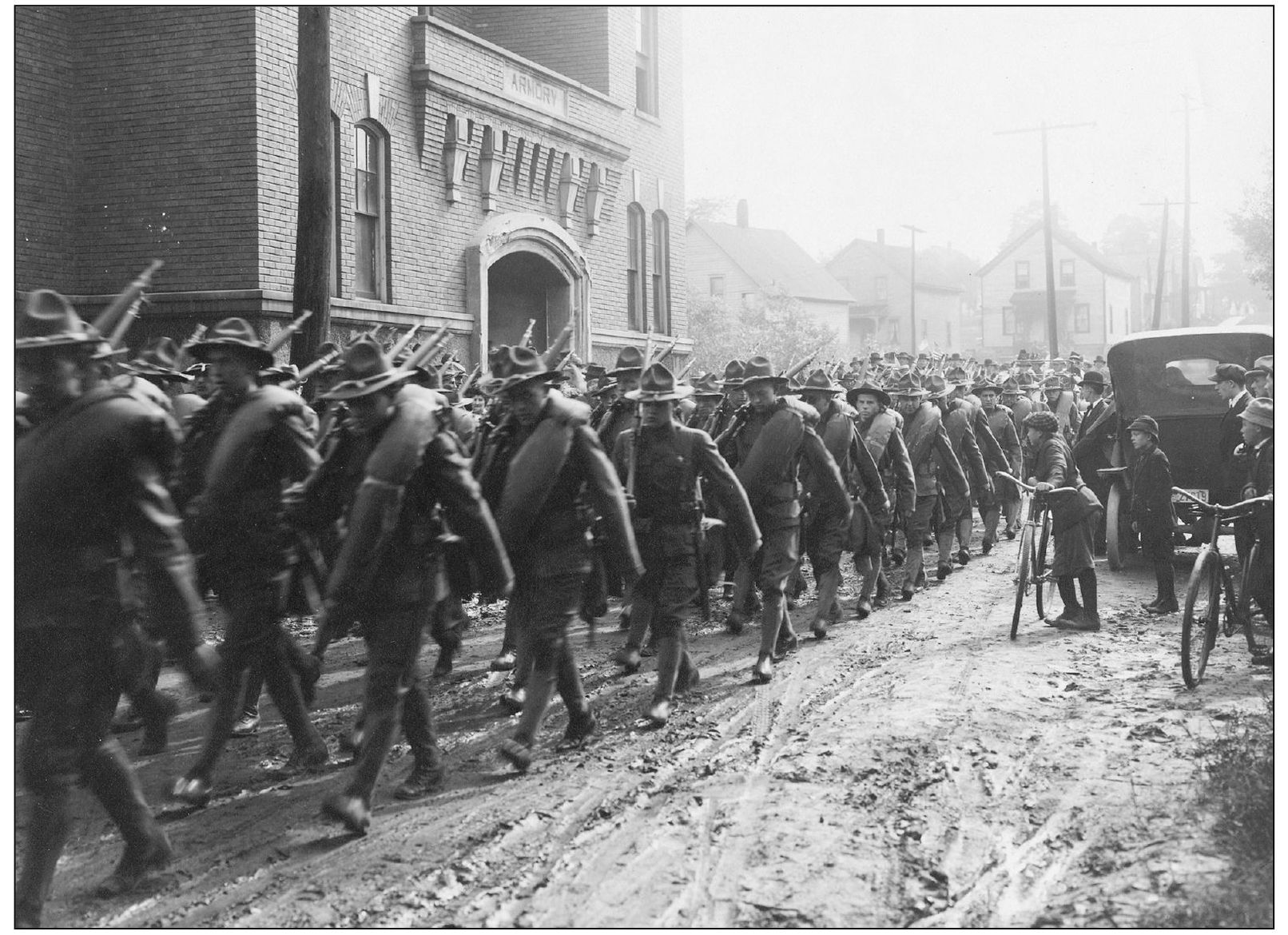
SOLDIERS LEAVING. Leaving the armory on West Pike Street in 1917, the first draft contingent is heading to Grayling before being shipped out to war. The importance of the day can be seen in not only the faces of the soldiers but also in the bystanders. Young boys are looking on in a sense of awe, getting as close as possible to the recruits. (Courtesy of OCPHS.)
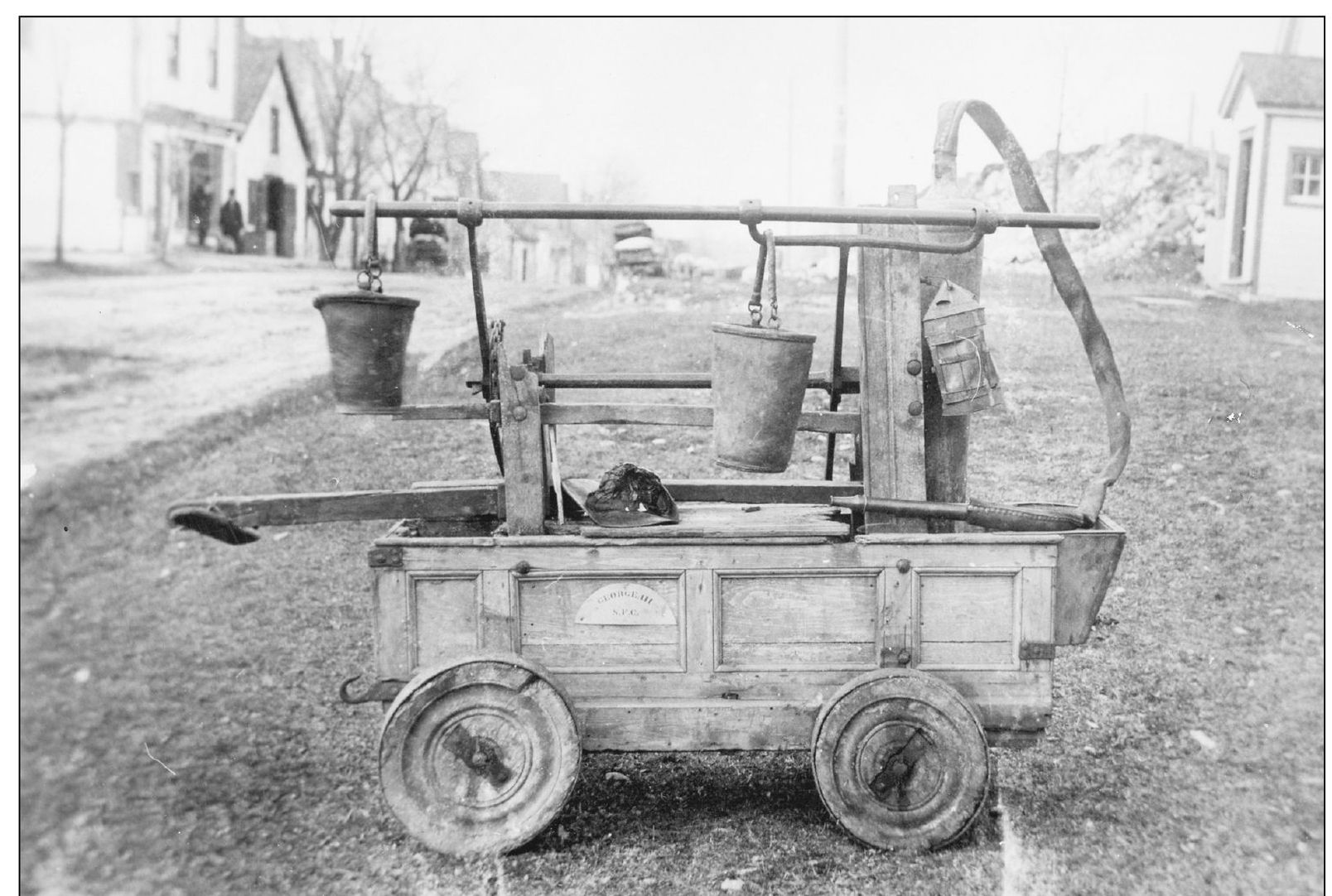
FIRE EQUIPMENT. This early portable pumping station (above) has handles for two men to pump (one on each side), buckets for carrying water, a lantern, and a hook. It appears to be for use in remote locations. The building (below) is Victorian, and at the time it was built, the fire station used horses and wagons. This is Pontiac’s main station on Pike Street with two pumpers, a ladder truck, and the chief’s car. There are 29 firefighters and a boy pictured. The uniforms have brass buttons that needed to be polished regularly. (Both courtesy of Pontiac Public Library.)
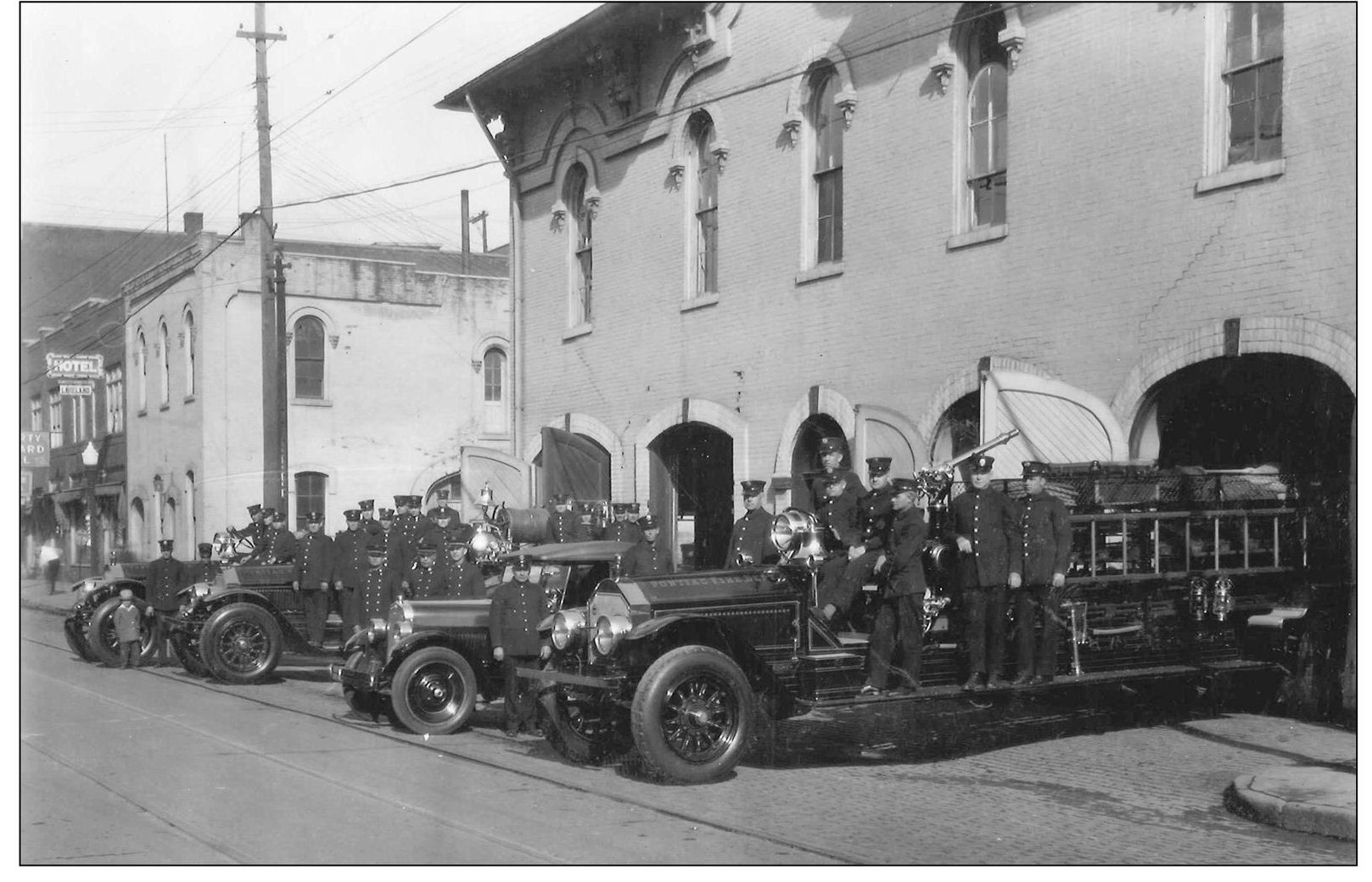
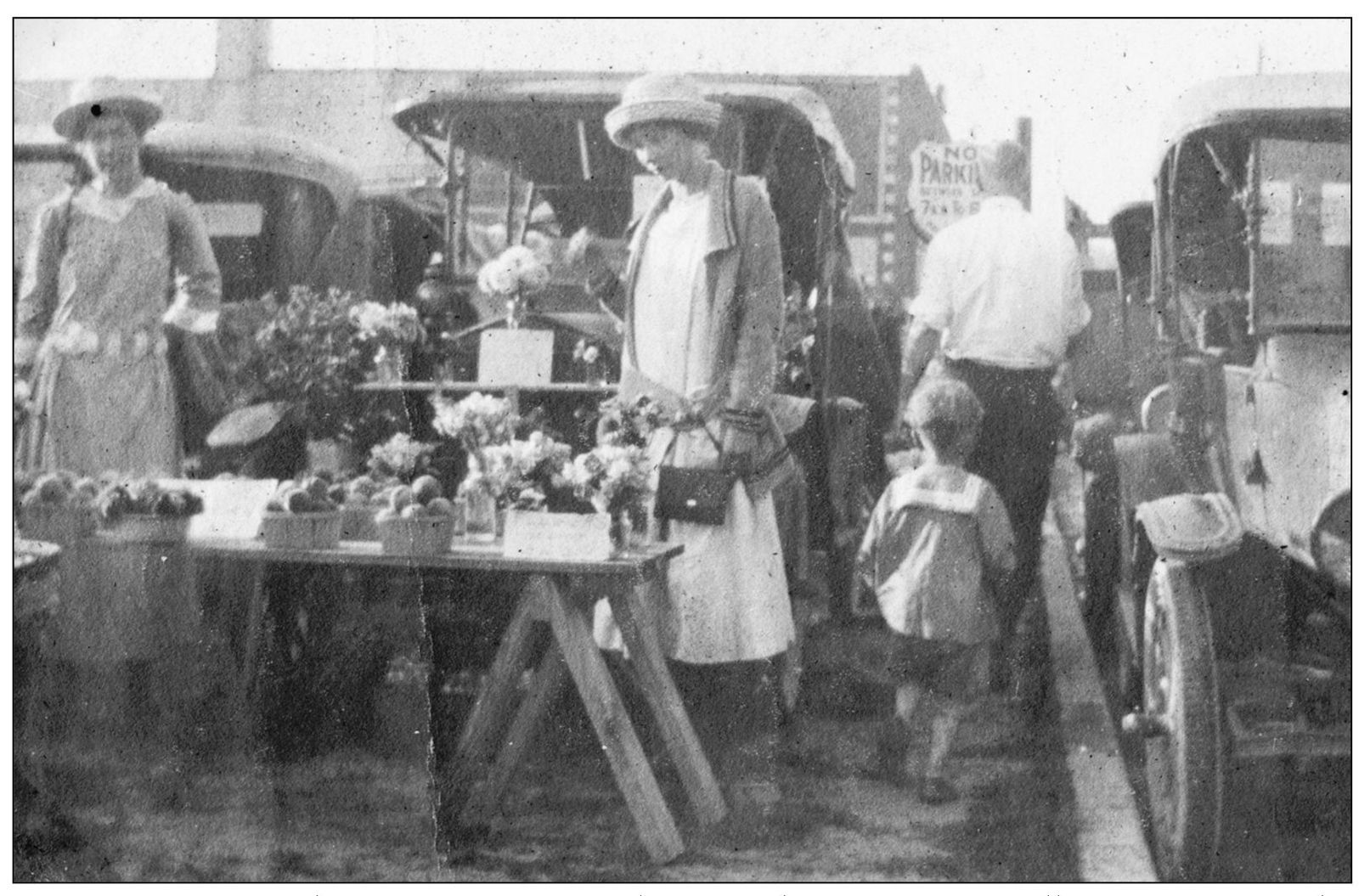
FARMERS MARKET. The county farmers market started in Pontiac on Mill Street in 1923. The farmers had only one bay for their vehicle and table. Geoff Holmwood was present that first year and still takes his goods to market on Saturday. He says that before the county market, vendors came to town and parked on the street to sell their produce. No other photograph of this early market is known to exist. (Courtesy of Geoffrey Holmwood.)
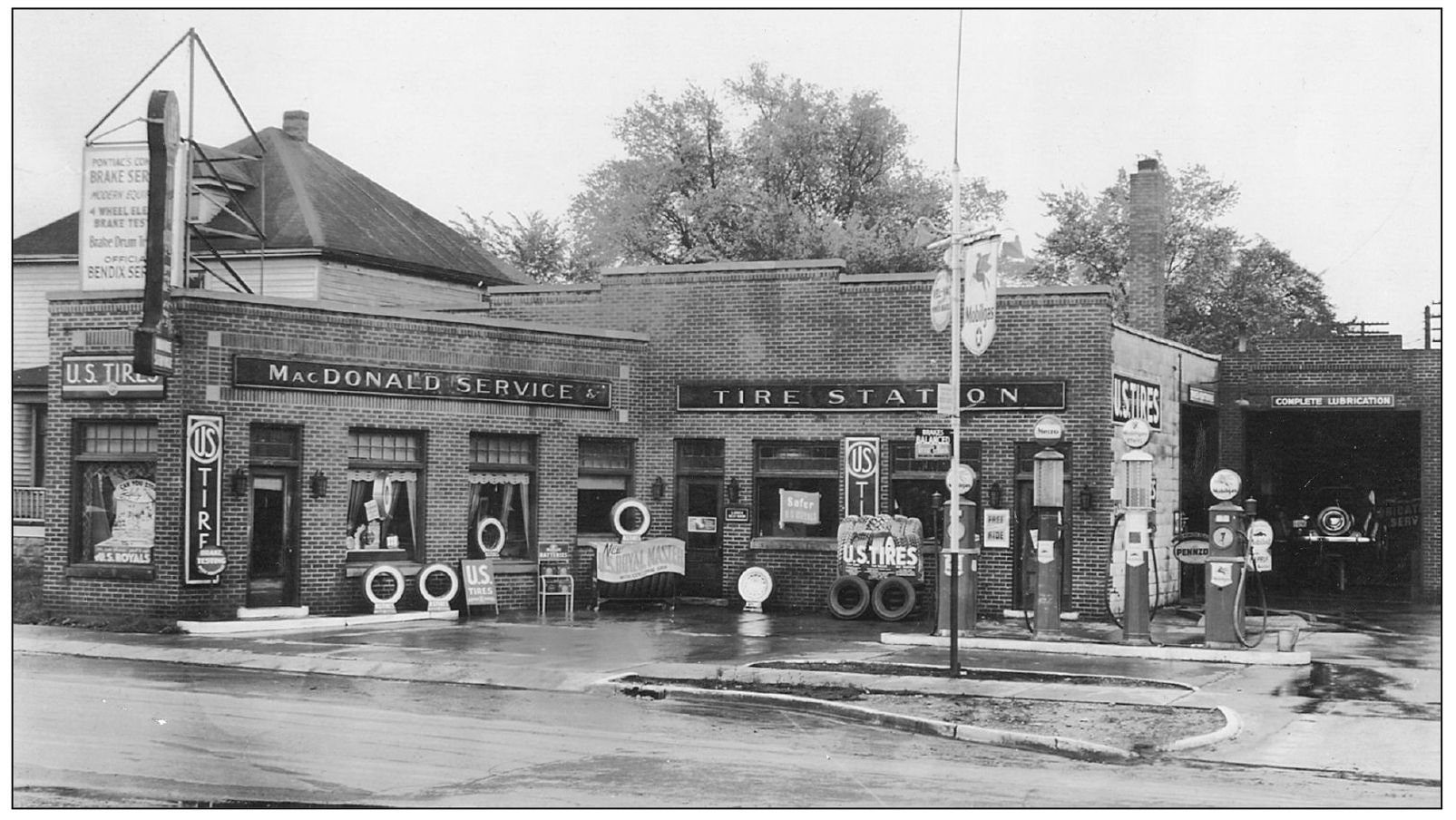
MACDONALD’S STATION. This service station and tire store was owned by Don R. MacDonald. He was a resident of Sylvan Lake. The store was a dealer for U.S. Royal Tires, later known as Uniroyal. The car in the bay is a 1936 Ford. MacDonald was a World War I veteran, one-time mayor of Sylvan Lake, and commodore of the Oakland County Boat Club. He owned a Chris Craft for his personal pleasure. The building is still on the Woodward Loop. (Courtesy of Norm Kasavage.)
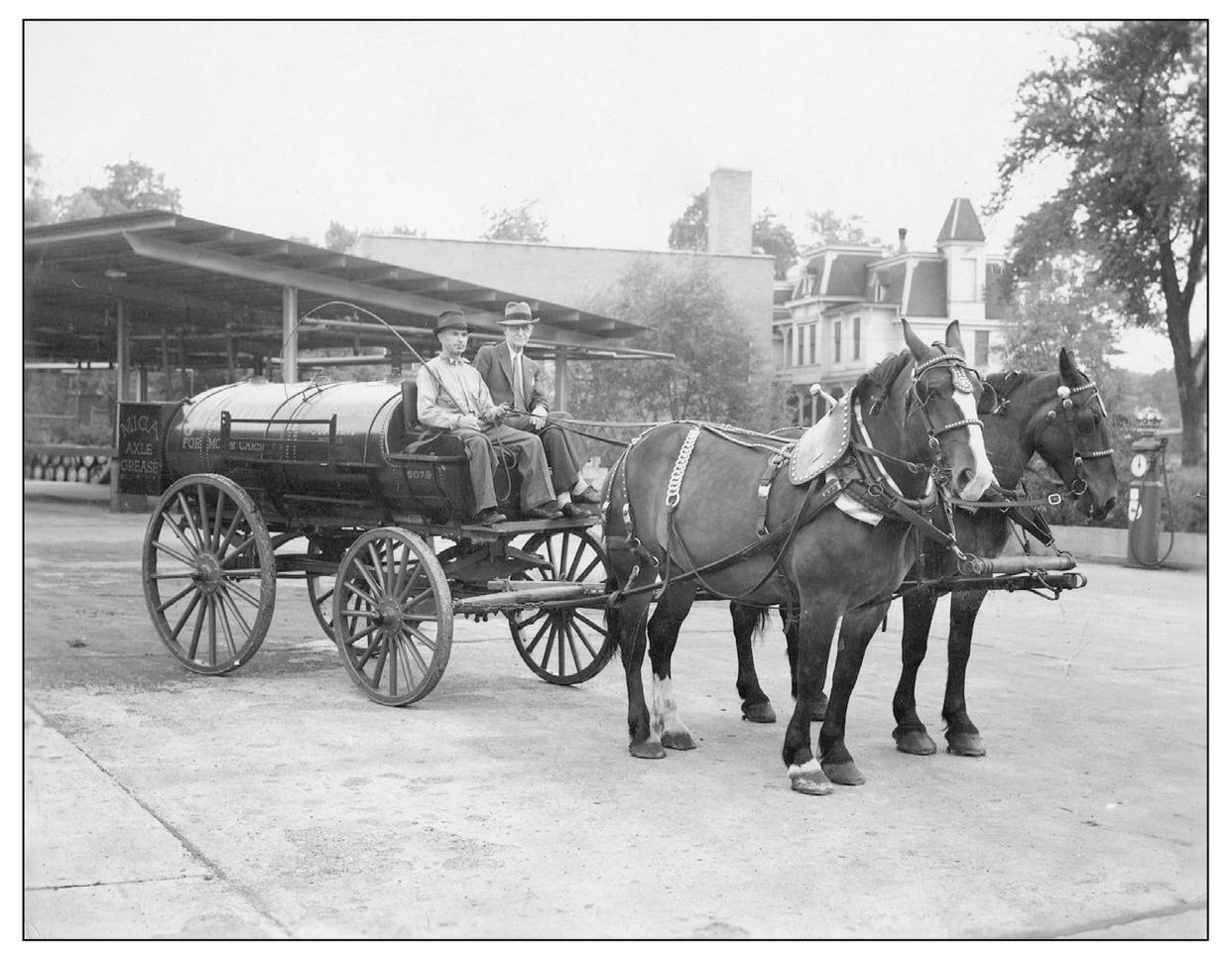
STANDARD OIL TRUCK. Before there were gas-powered trucks, wagons were trucks. The wagon, cutter, and carriage business got going in Pontiac after the Civil War, but it was established beforehand. This is one of the many specialty trucks of the day, just like today’s models. (Courtesy of OCPHS.)
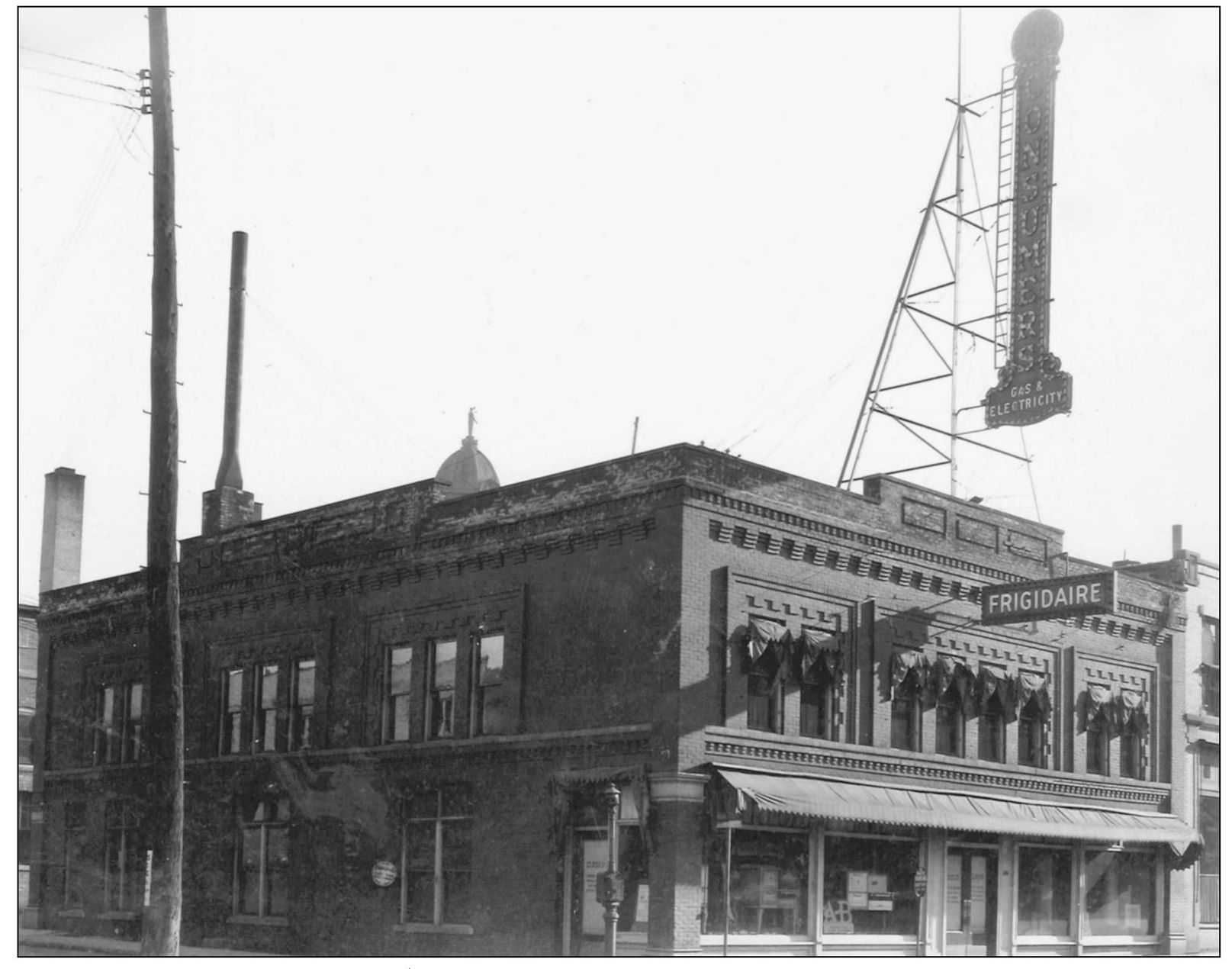
CONSUMER’S POWER STORE. This store is on West Lawrence Street. Consumer’s Power was in business well before this store was selling refrigerators and stoves. Frigidaire was an early brand that became so popular that refrigerators were often called Frigidaires. The courthouse dome is in the back center. (Courtesy of Pontiac Public Library.)
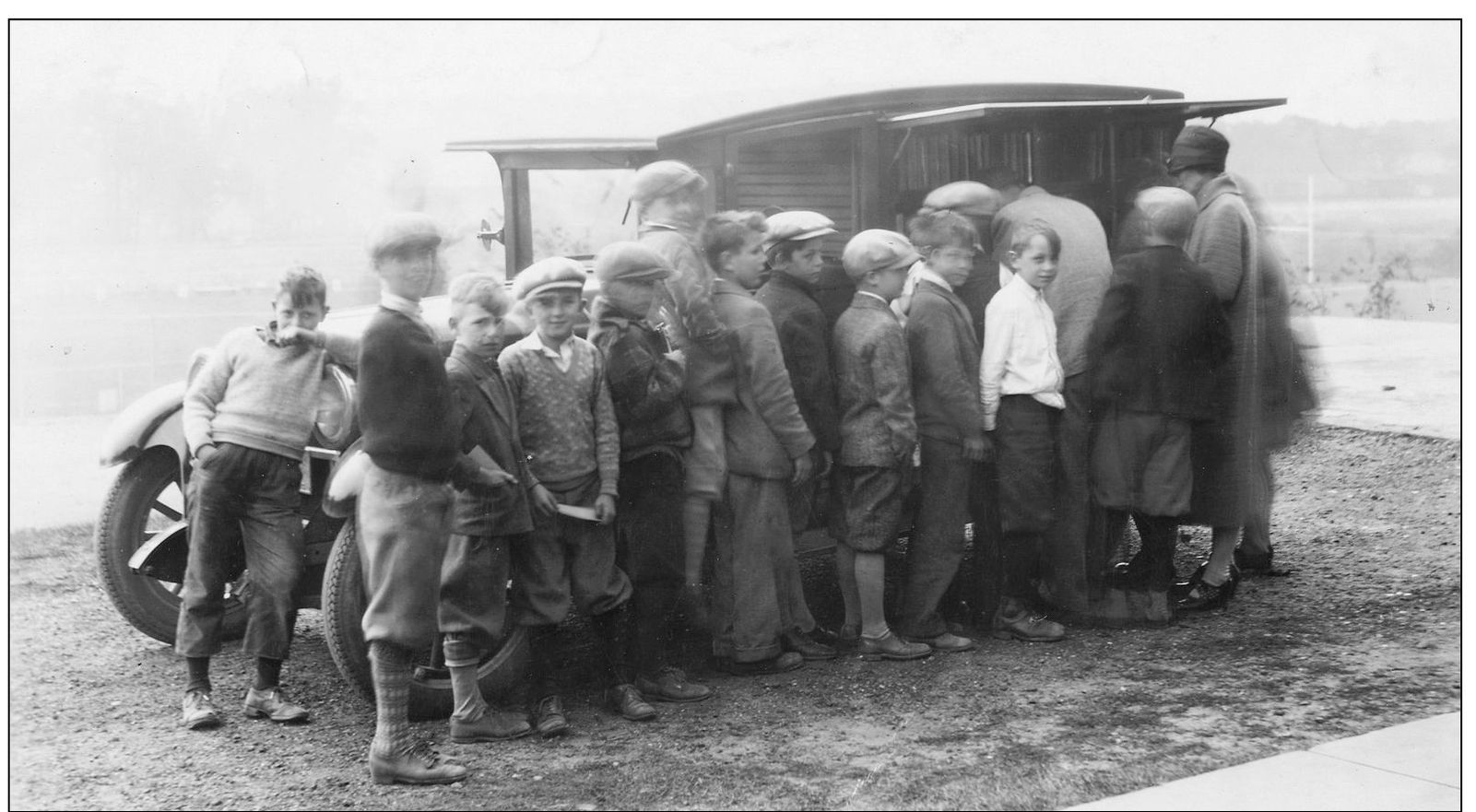
BOOKMOBILE. Waiting patiently and calmly, boys line up to check out books. Books were a luxury many could not afford, especially during the Depression. (Courtesy of OCPHS.)
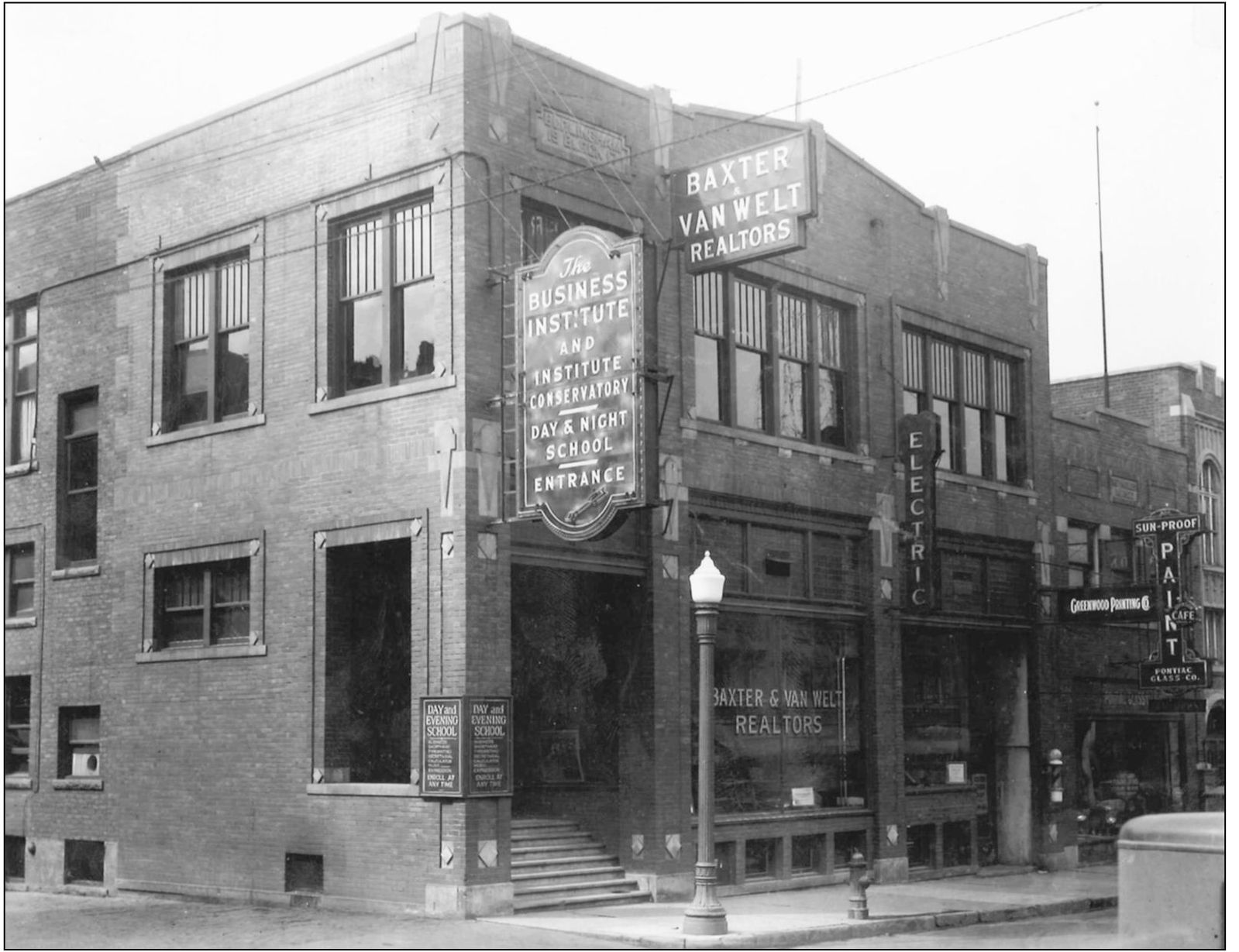
BUSINESS INSTITUTE. This building housed at least three businesses. In 1929, the Institute Conservatory put on its 134th pupil’s recital, indicating the length of time it was teaching voice, piano, and other musical skills. The institute was there until General Printing moved in downstairs to sell office supplies and contract printing work. (Courtesy of Pontiac Public Library.)
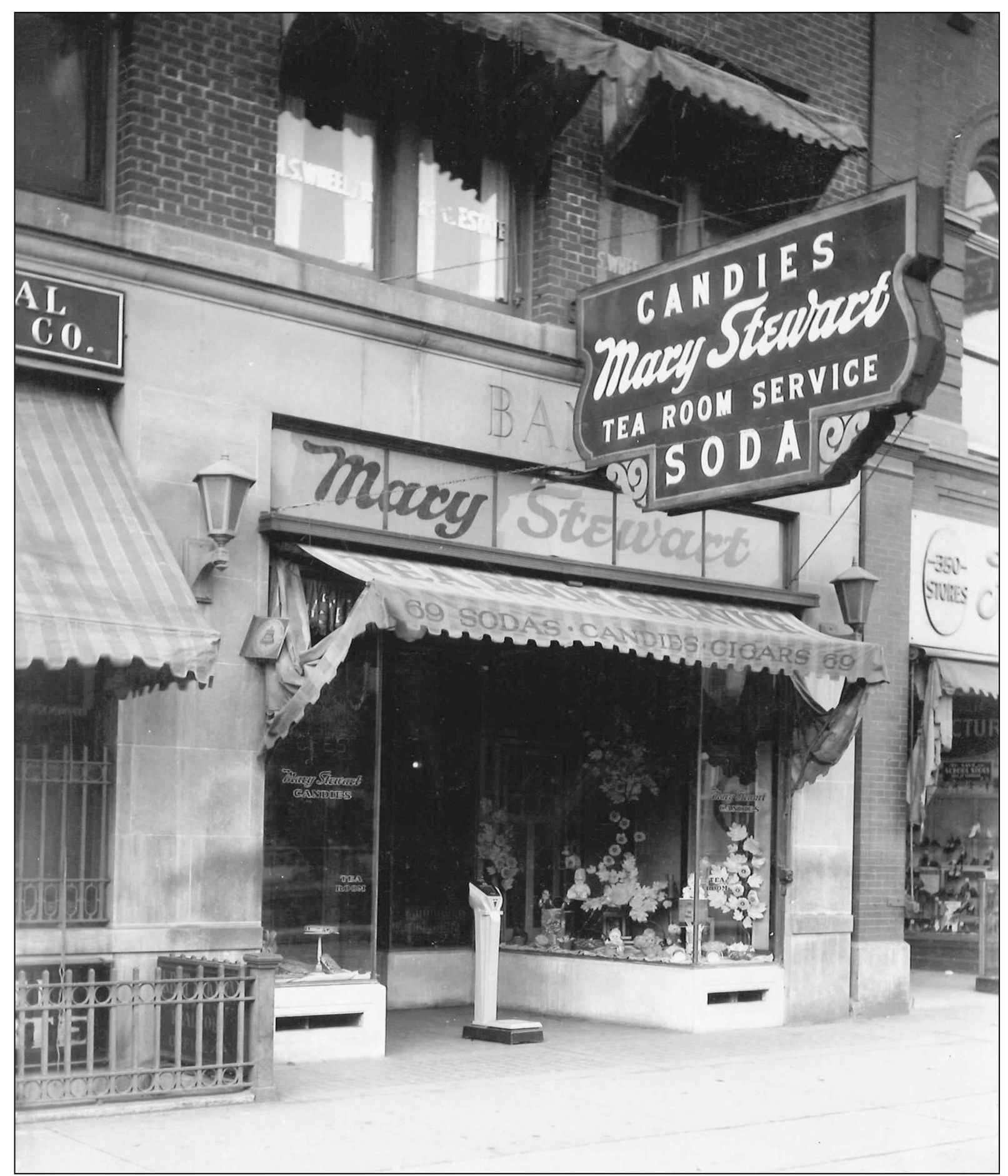
MARY STEWART’S TEA. Over the decades, the popularity of tea in Pontiac seems to indicate the presence of early immigrants from the British Isles. The penny scale by the entrance was a common fixture of the mid-20th century. Most would give a person’s weight and a fortune for a penny. The store sold sodas that had become popular as well. (Courtesy of OCPHS.)
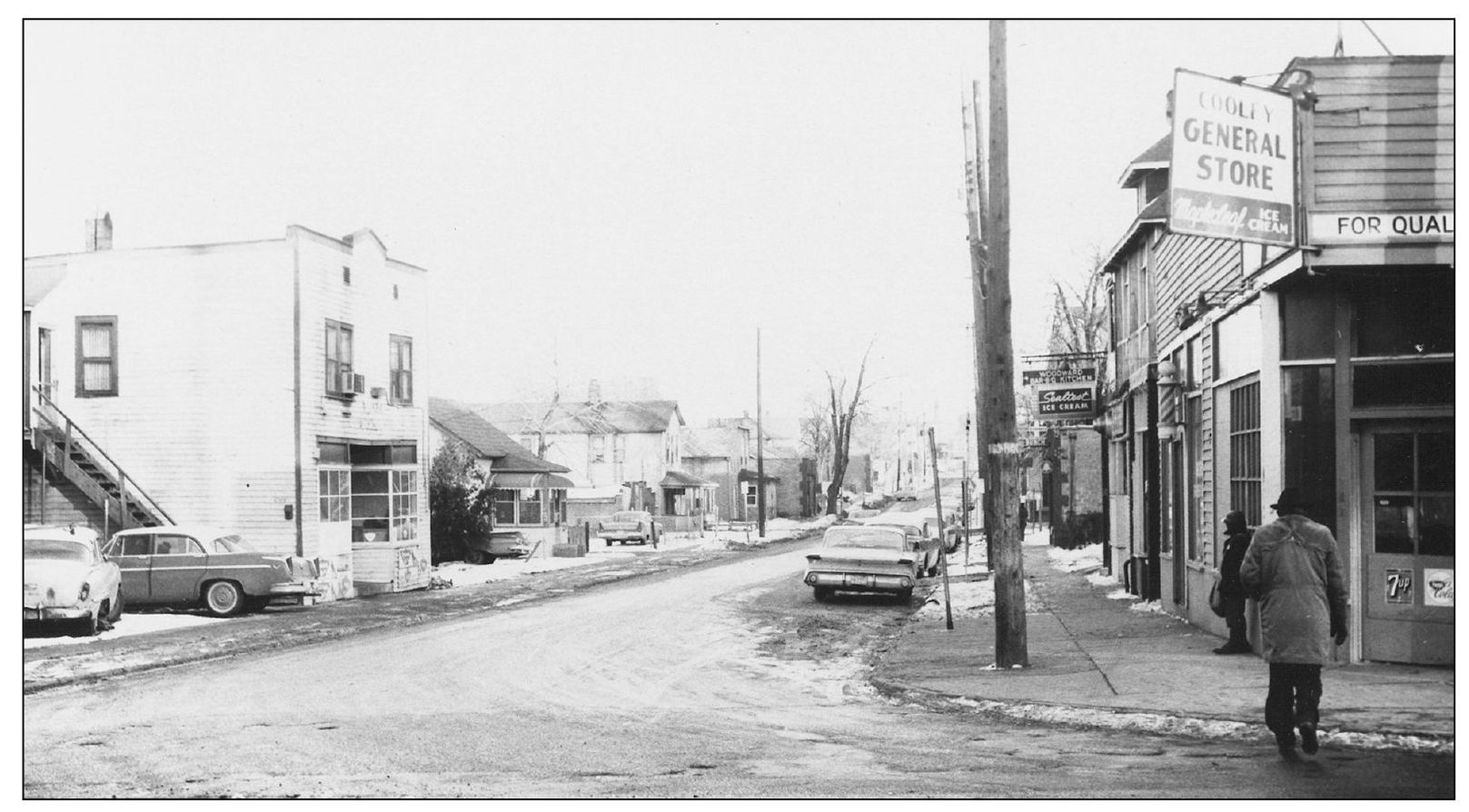
WESSEN AND BAGLEY. Known as “The Corner,” this was a major business center in the African American community into the 1960s. Pictured in the 1950s, Cooley General Store stands on the corner with the Woodward BBQ down the street. Dr. Howard McNeil had an office on Wessen Street. The Elks had a lodge on Bagley, south of Wessen. There was a poolroom, barbershop, funeral parlor, hotel, and an ice and coal company. (Courtesy of Pontiac Public Library.)
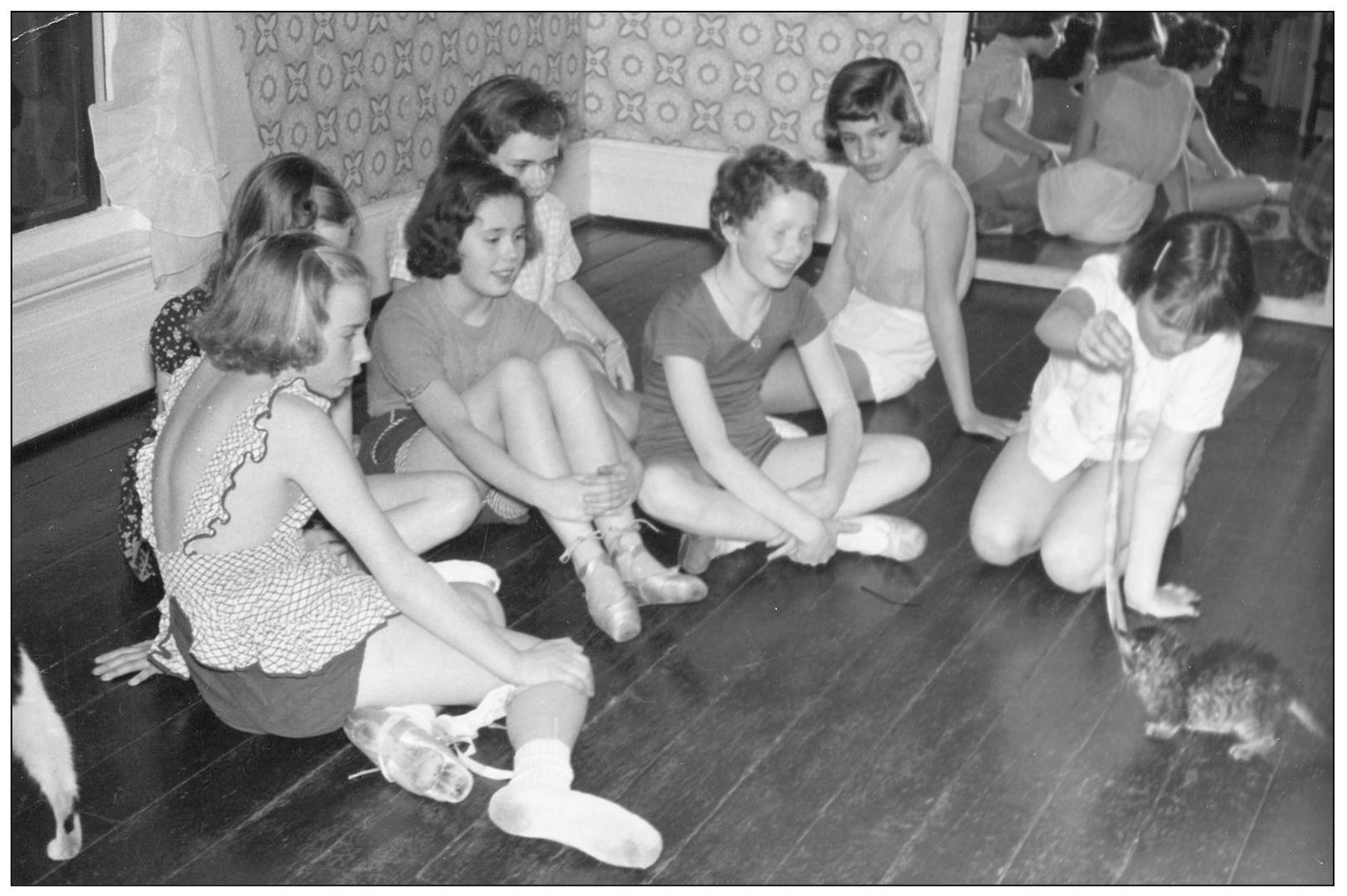
DANCE CLASS. Georgia Hoyt taught music and dance from her home in Pontiac for 65 years. Here are some girls from the middle part of the century playing with some of Hoyt’s cats. Recitals were given from time to time in various locations in and out of town. One recital was on the shores of Hammond Lake in the early part of the century. Members of the Detroit Symphony Orchestra came to play at the request Miss Hoyt. (Courtesy of OCPHS.)
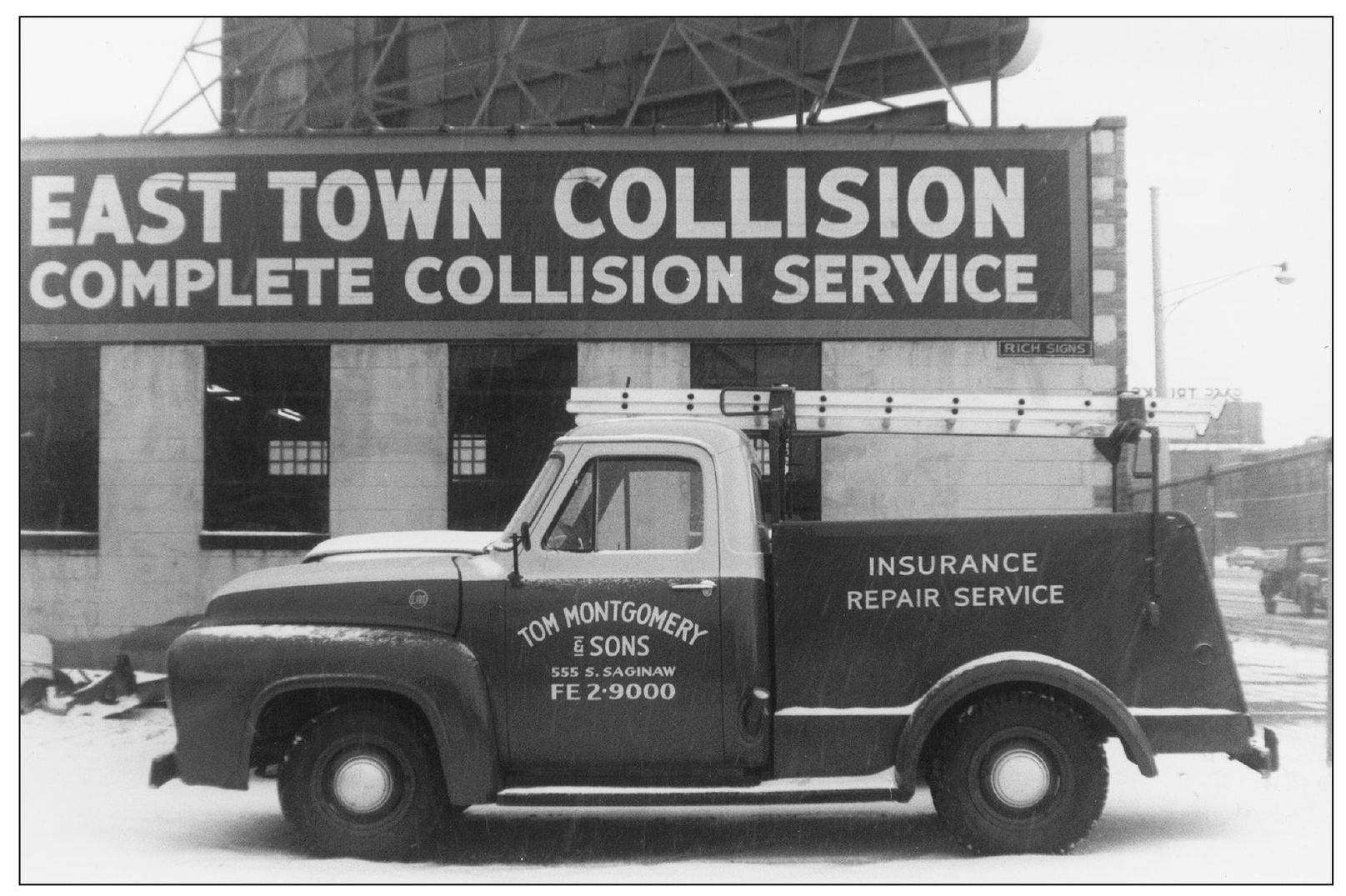
MONTGOMERY TRUCK. The sign on this truck was painted by Rich Sign, which still operates a sign business in Pontiac. Montgomery and Sons started business in town. It has grown to become a major fire and storm contractor in Michigan. A collision service currently operates out of this building on Woodward Avenue, formerly South Saginaw Street, by the railroad tracks. (Courtesy of Rich Sign.)
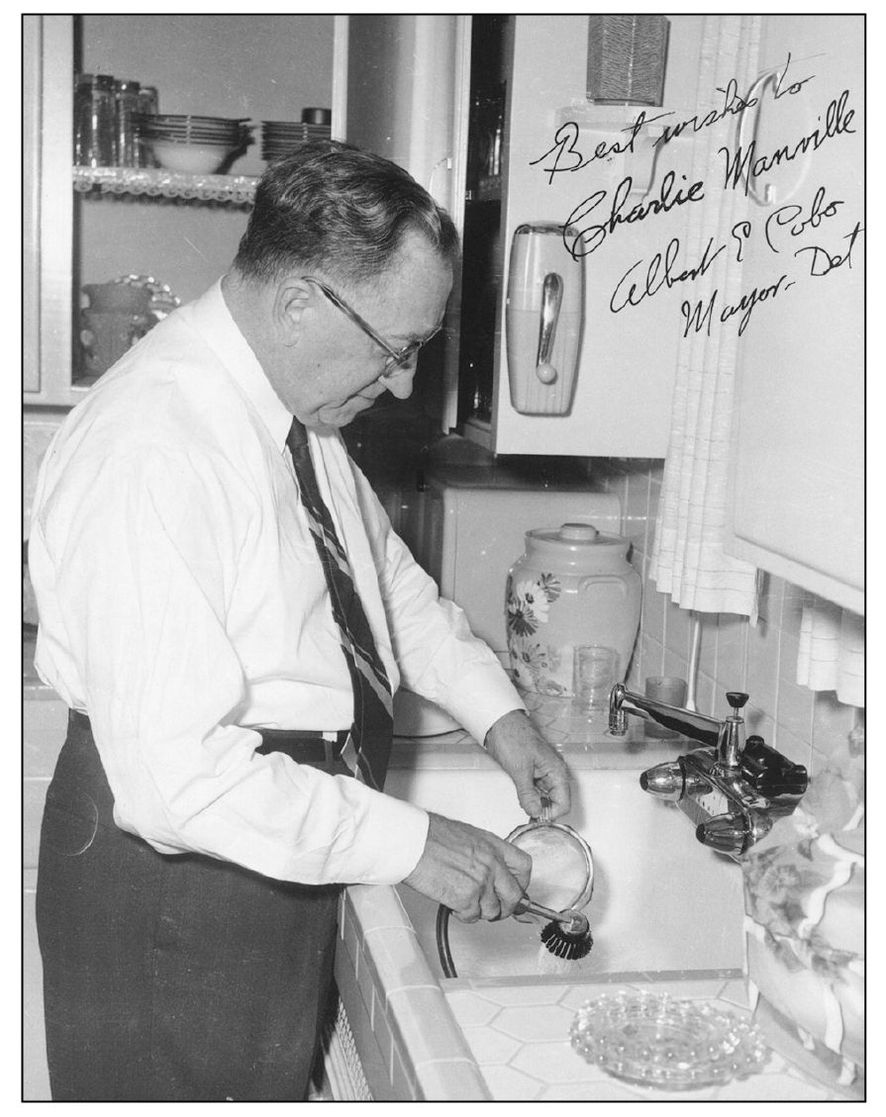
MAYOR COBO. Starting in 1948, the Dishmaster Faucet was made right here in Pontiac for decades on Bagley Street next to the golf course. The building was remodeled after the company moved to Indiana to become part of SilverStream LLC. The mayor of Detroit, Albert E. Cobo, namesake of Cobo Hall, is using his Dishmaster Faucet. He was so impressed with it that he sent the owner of the company, Charlie Manville, an autographed picture. The appliance has been given away on game shows and featured in movies like Indiana Jones and the Kingdom of the Crystal Skull. (Courtesy of SilverStream LLC–Dishmaster Faucet.)
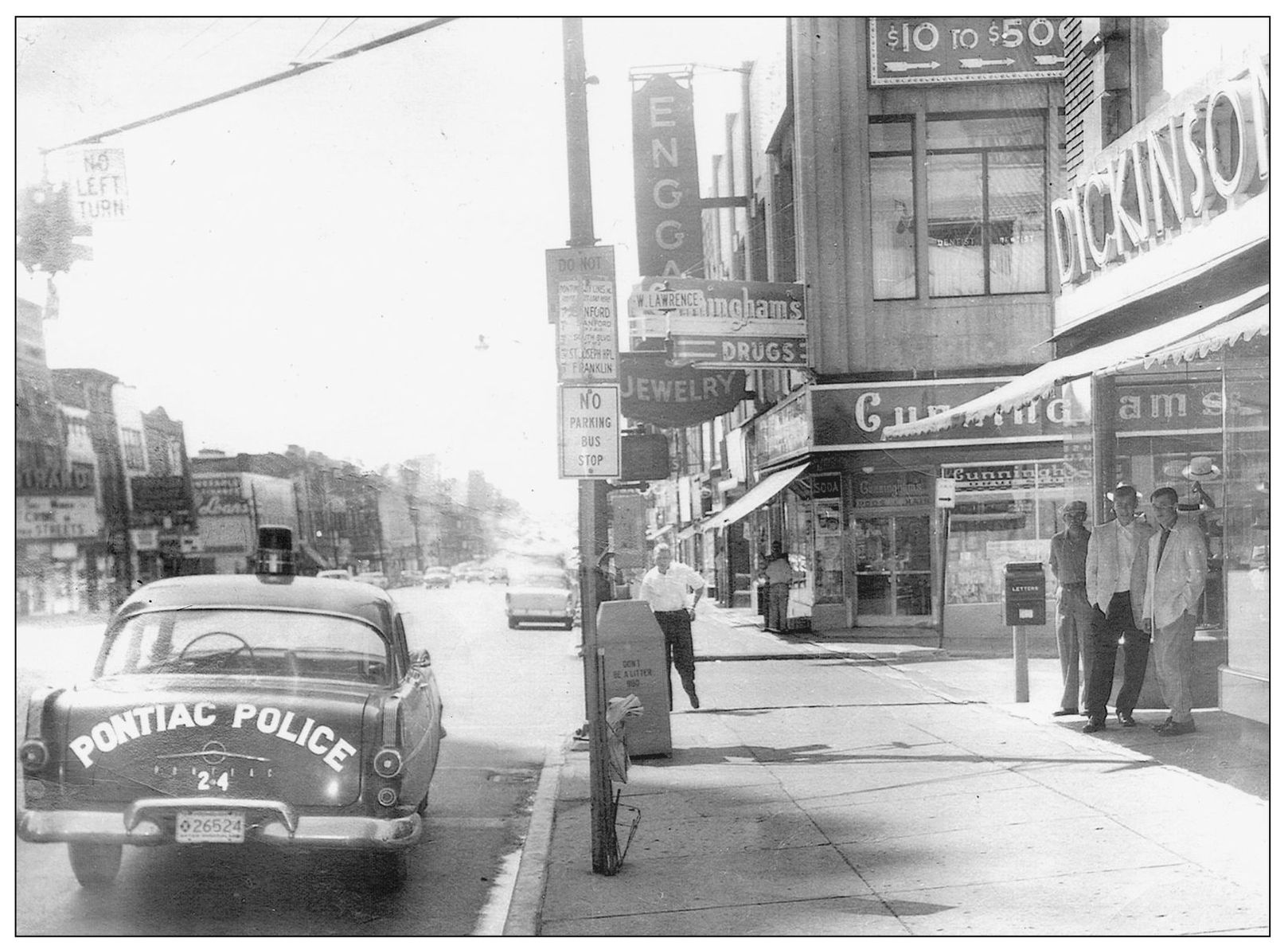
POLICE CAR. It is only appropriate for Pontiac policemen to drive a Pontiac car. And it is only appropriate for the squad car to be parked across the street from the Strand Theater, which is playing Crime on the Streets. This was before the urban renewal plan changed the city dramatically. (Courtesy of Service Glass.)
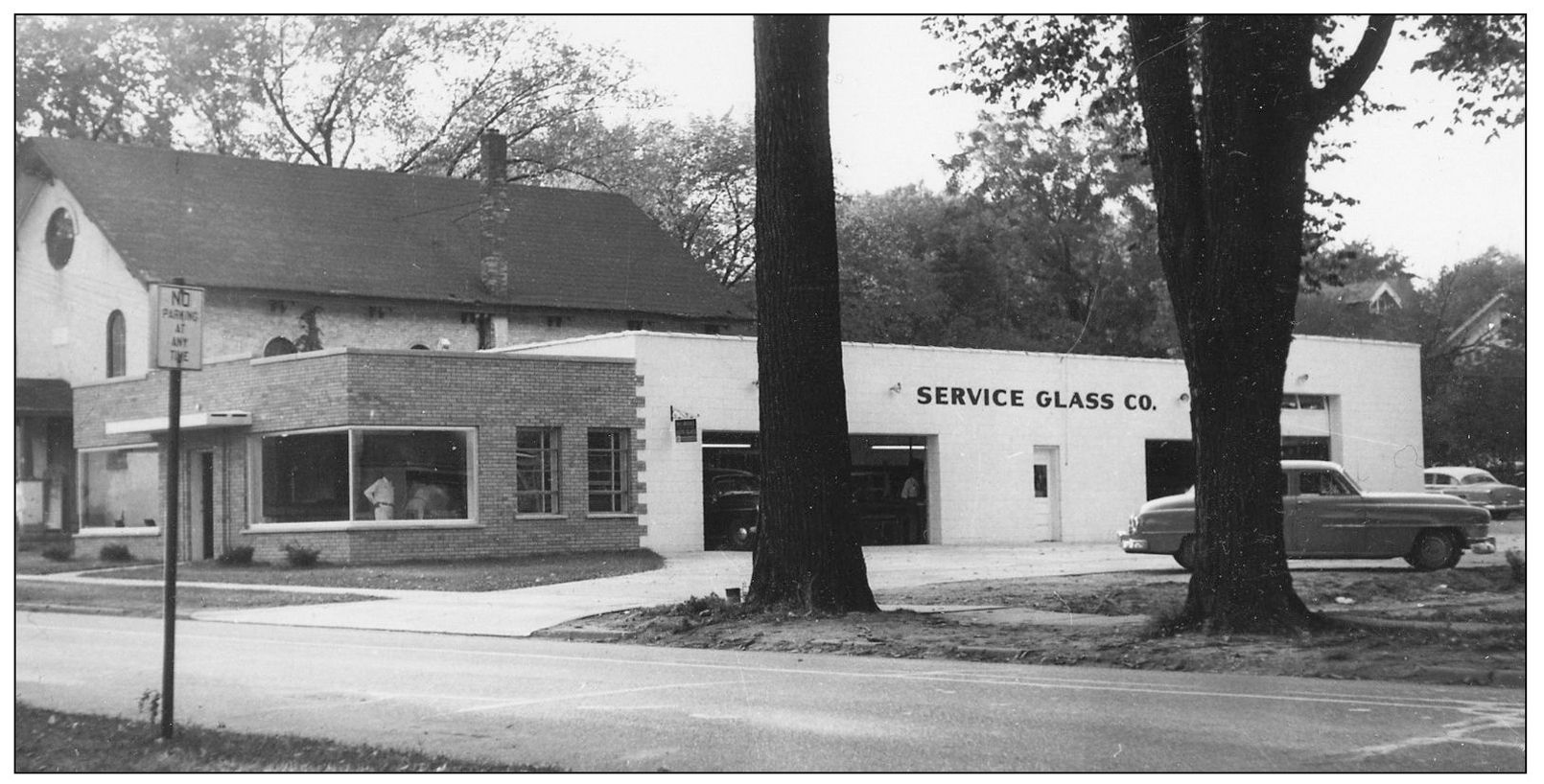
SERVICE GLASS. Richard Shafto became an owner of Service Glass in 1973 after longtime employment there. The company has been a fixture in Pontiac for over half a century. The Clinton River used to run through this area, and the Hinman Estate was just in front of the glass company. Maybe that explains why some years back a major sinkhole opened in the businesses’ parking lot. It turned out to be an old cistern, likely the Hinmans’. (Courtesy of Service Glass.)
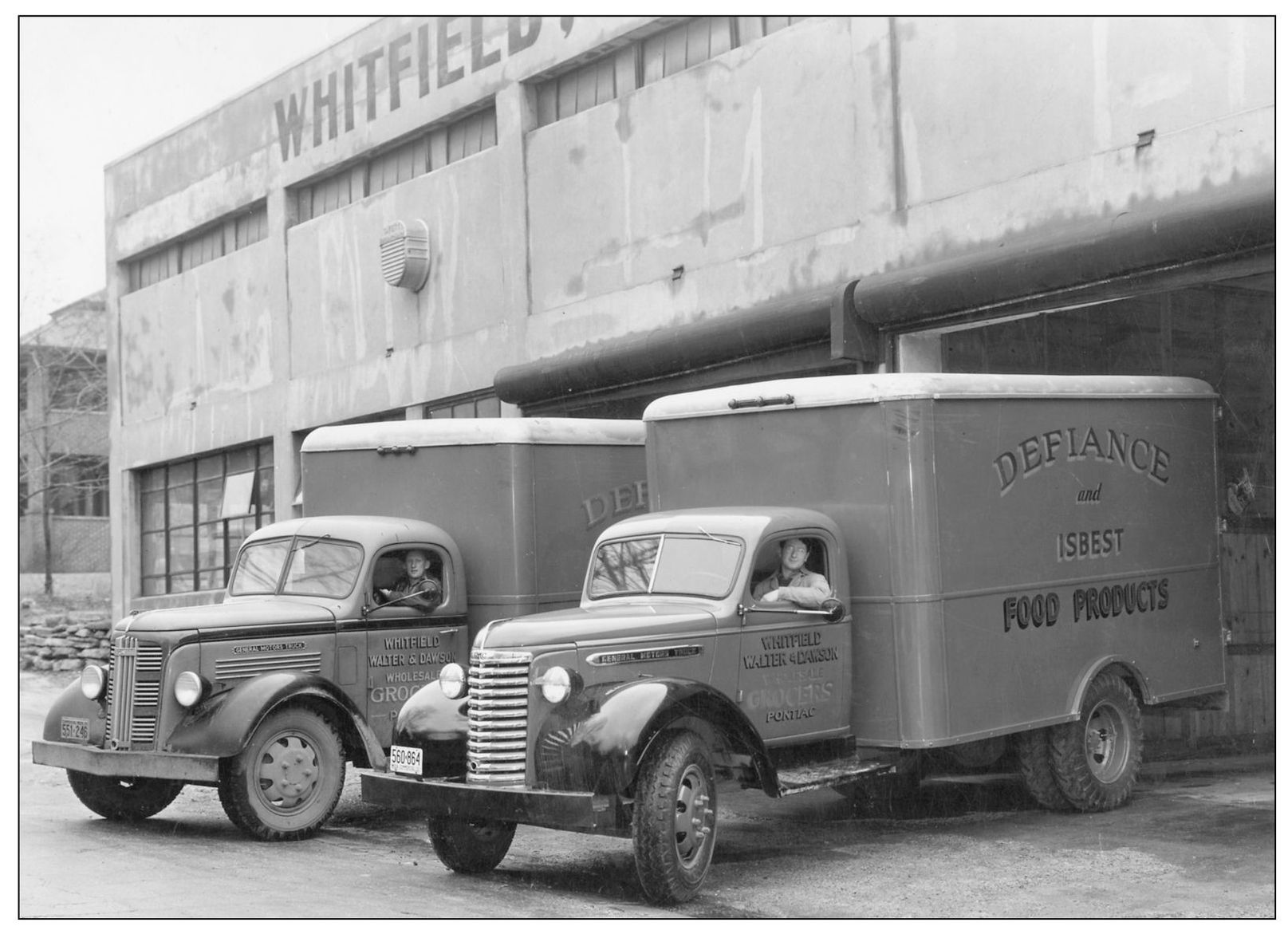
WHITFIELD, WALTER, AND DAWSON. Two owners and a silent partner owned this wholesale grocery business. It was located at 118 West Lawrence Street from 1929 to 1954. Guy Walter’s grandson, Guy Duffield, remembers the job of hand-pasting labels on canned goods as a boy. The two brands of the wholesaler were Isbest and Defiance. The trucks are, from left to right, 1937 and 1938 GMC models. (Courtesy of Carol Craven.)
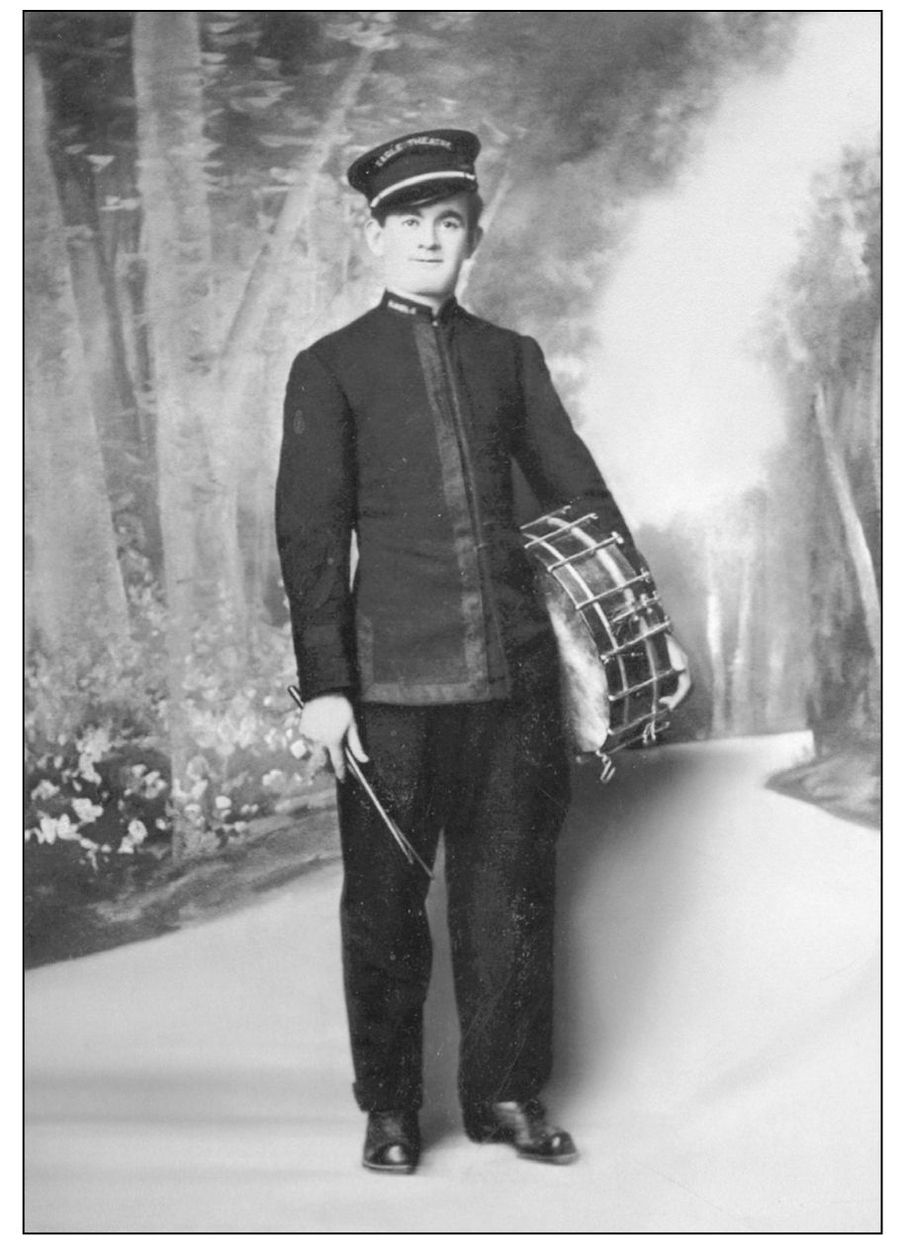
THEATER DRUMMER. Edward Fox worked in the coal mines and learned the drums from Tommy Dorsey’s father in Pennsylvania before coming to Pontiac at 19 years old. He played in many Pontiac theater orchestras for vaudeville and silent movies. His hat reads, “Eagle Theater.” Talking movies put him out of work, so he became a janitor at the Strand before working in the auto industry. (Courtesy of Richard Thibodeau.)
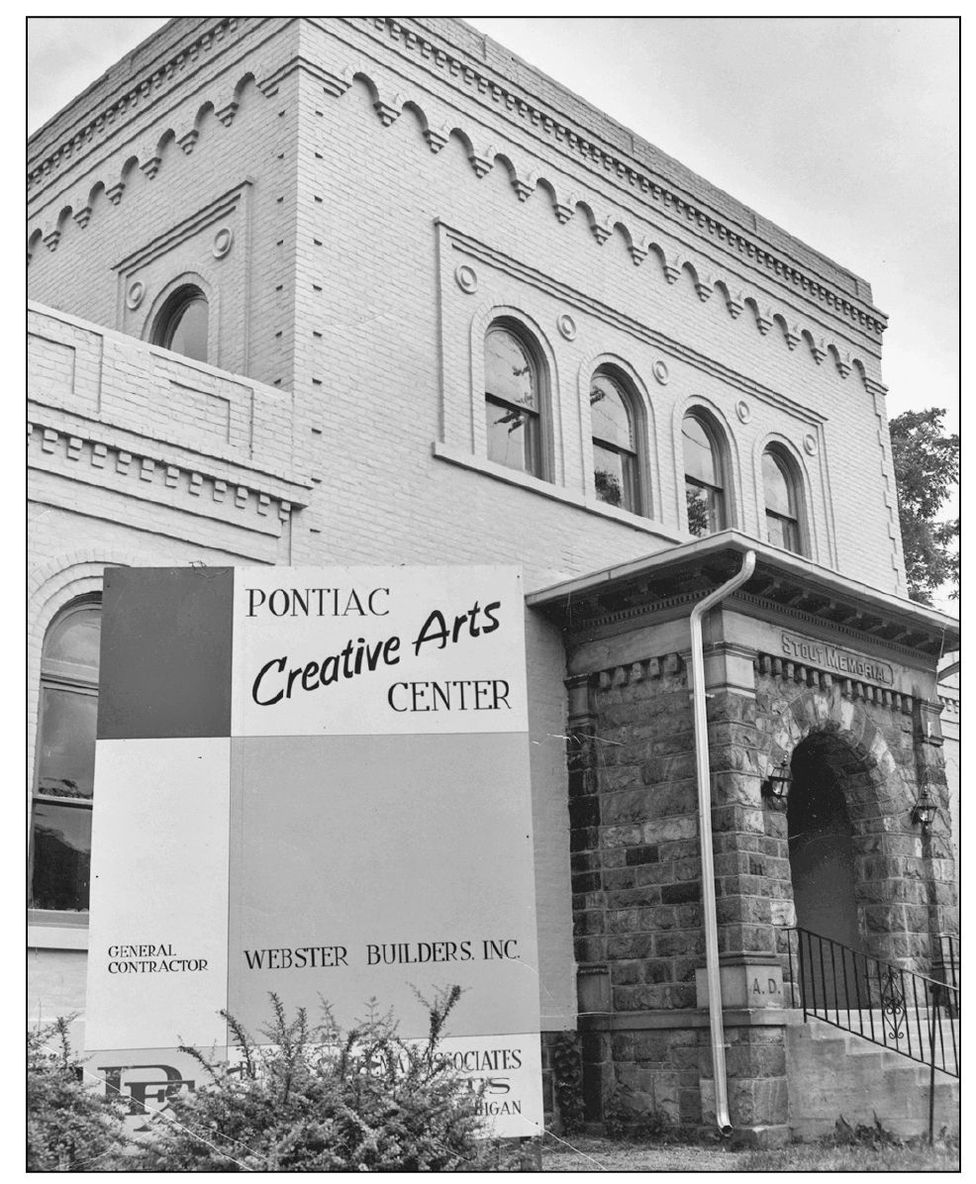
ART CENTER. After the City of Pontiac opened its new library in 1960, the old Stout Memorial Library became available. Dr. Harold Furlong, an obstetrician and patron of the arts, thought it would make a good art center. Though the building is still owned by the city, the Creative Arts Center has been funded by an endowment of the Furlongs, as well as other charitable contributions. It opened in 1968. (Courtesy of Pontiac Creative Arts Center.)
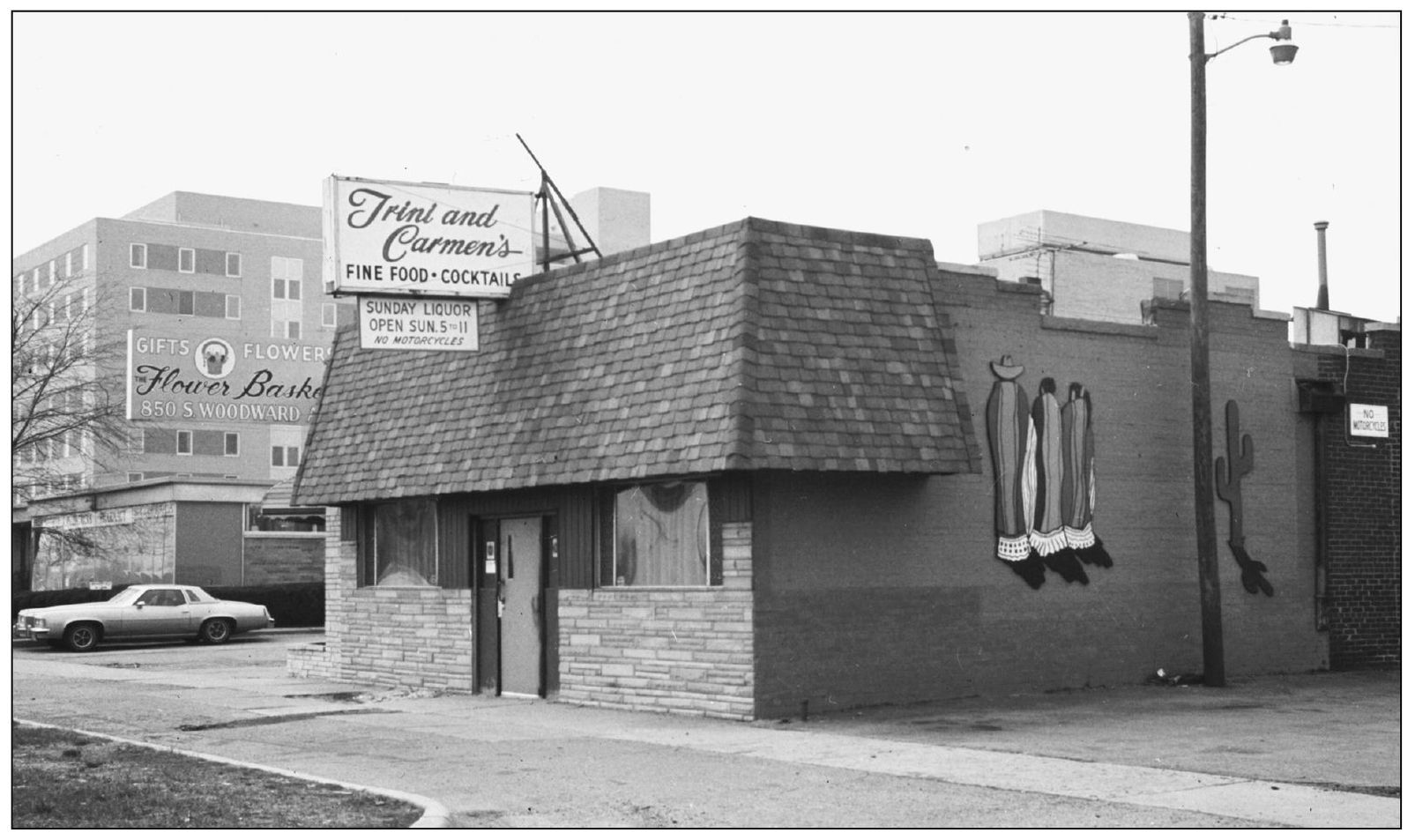
TRINI AND CARMEN’S. Trini and Carmen Martinez opened their restaurant on Woodward Avenue in 1966. They closed two previous establishments to make the move. Carmen says that when they first opened, their menu was meat and potatoes, as the previous owner had served. Their first nachos were chips and jalapenos. The nachos soon evolved, along with the entire menu, which included other Mexican items. St. Joseph Mercy Hospital bought this location many years ago for expansion. (Courtesy of Walter P. Reuther Library, WSU.)
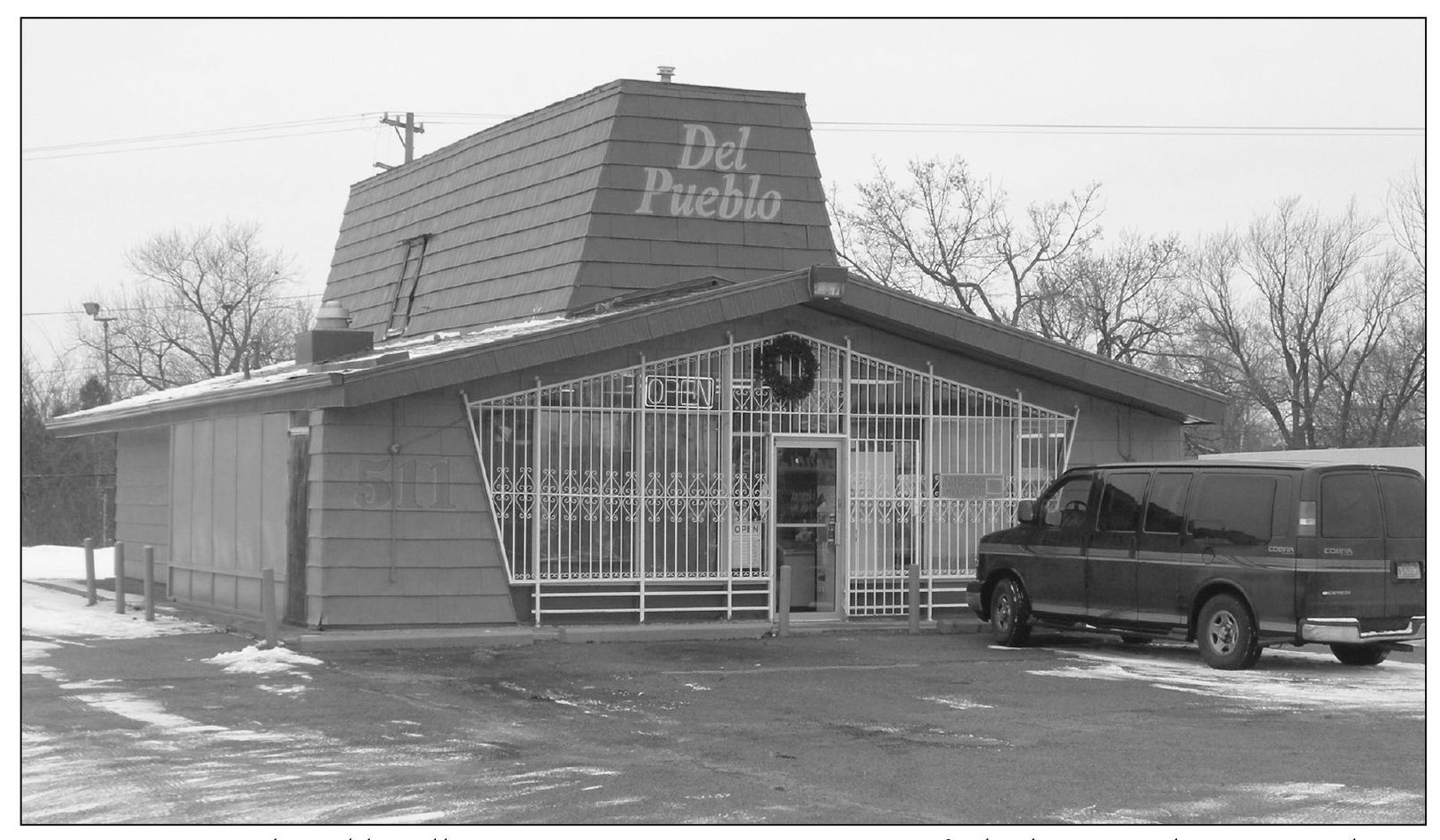
DEL PUEBLO. Del Pueblo sells Mexican grocery items, some of which are made on-site. This is the second location for the store in Pontiac. The first one opened in 1968 on Auburn Avenue. The Perry Street corridor, as well as Baldwin Avenue, has become a common area for Mexican businesses to locate. (Author’s collection.)
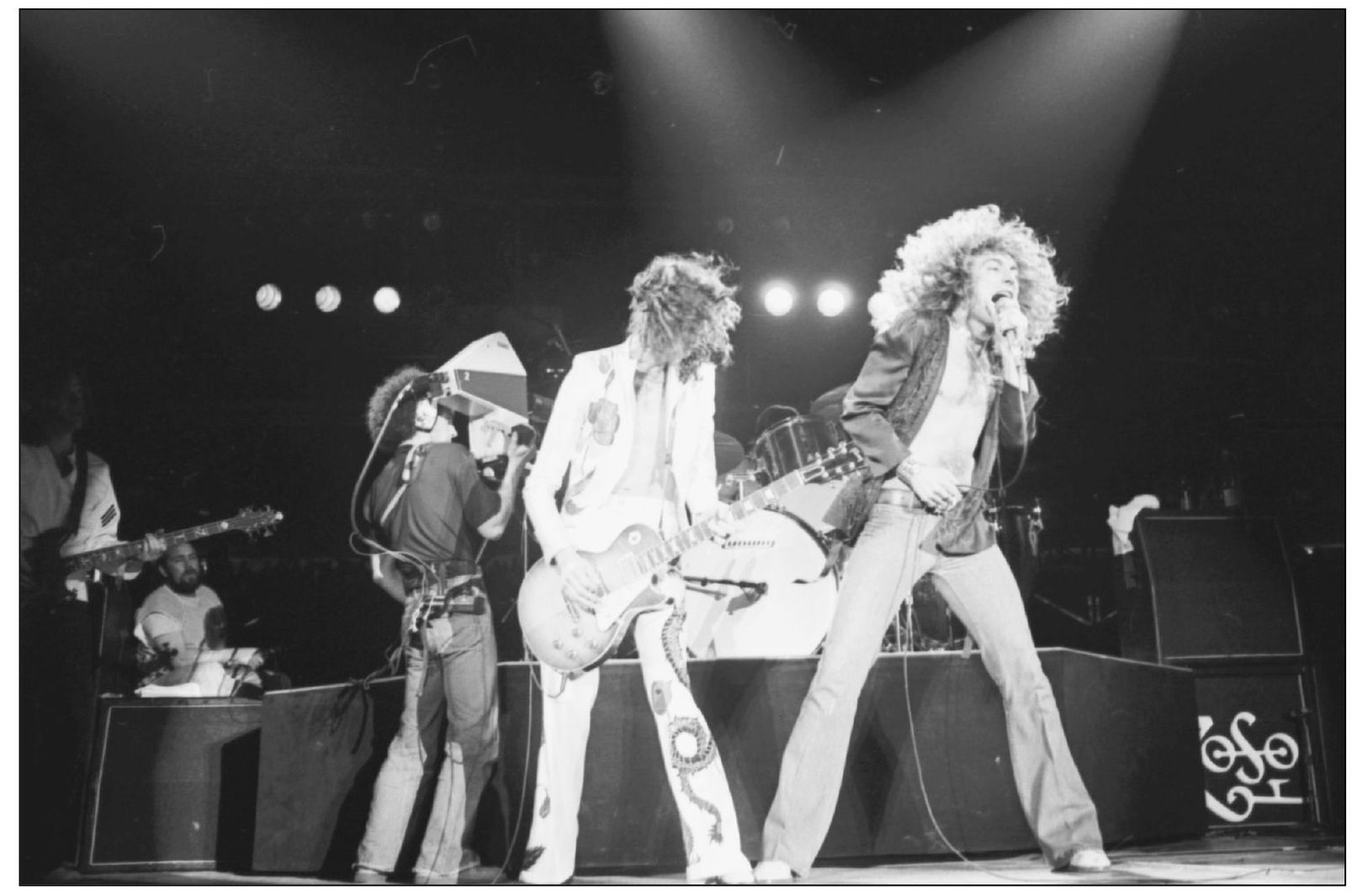
LED ZEPPELIN. One of the side benefits of having an indoor football stadium is the ability to host big-name artists like Michael Jackson and Led Zeppelin that attract large crowds. However, the largest attraction over the life of the arena was not a rock star but a religious leader. In 1987, over 93,000 people showed up to see the pontiff, Pope John Paul II. The rock superstars fell nearly 20,000 fans short of that benchmark. (Courtesy of Walter P. Reuther Library, WSU.)